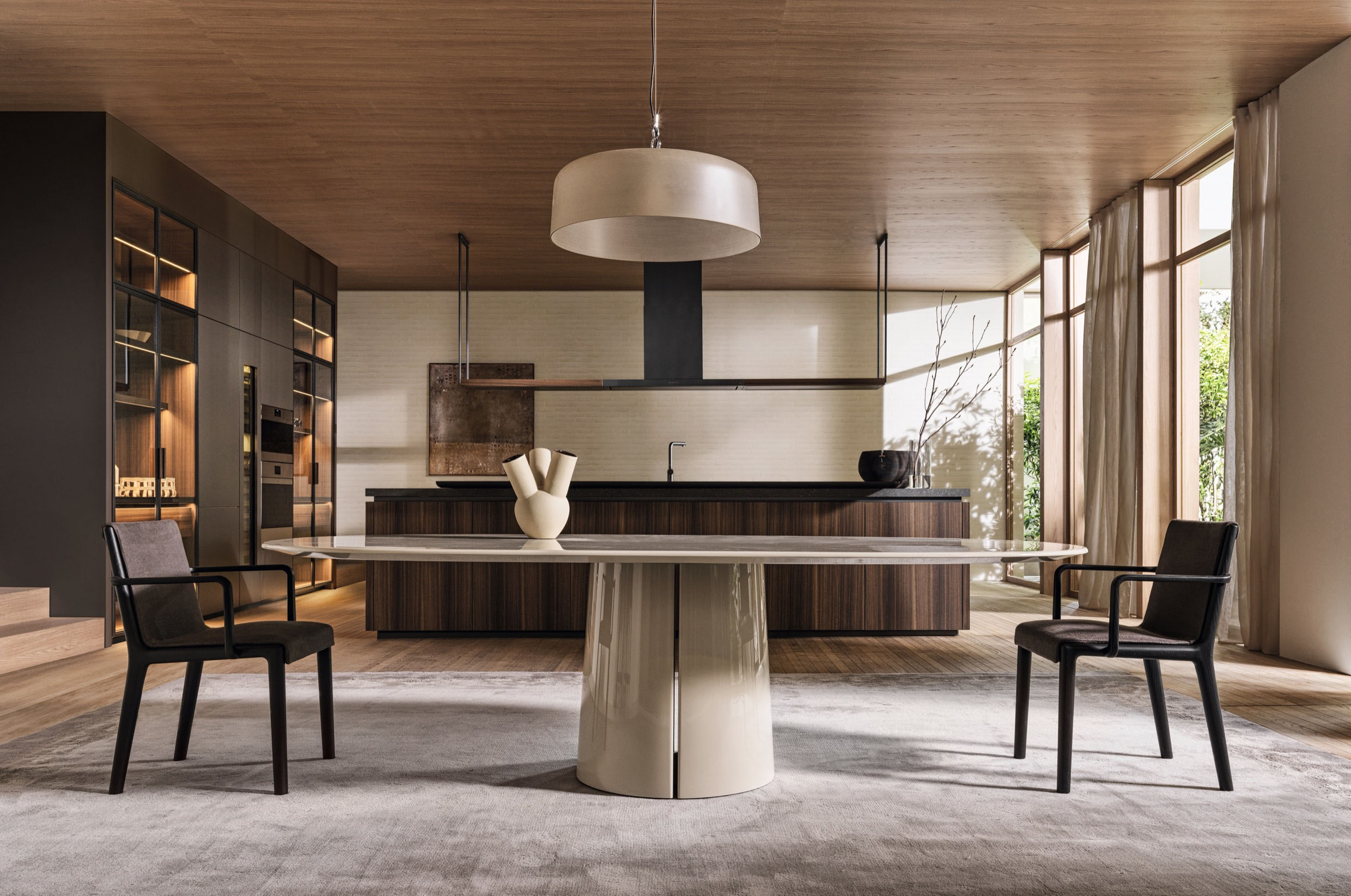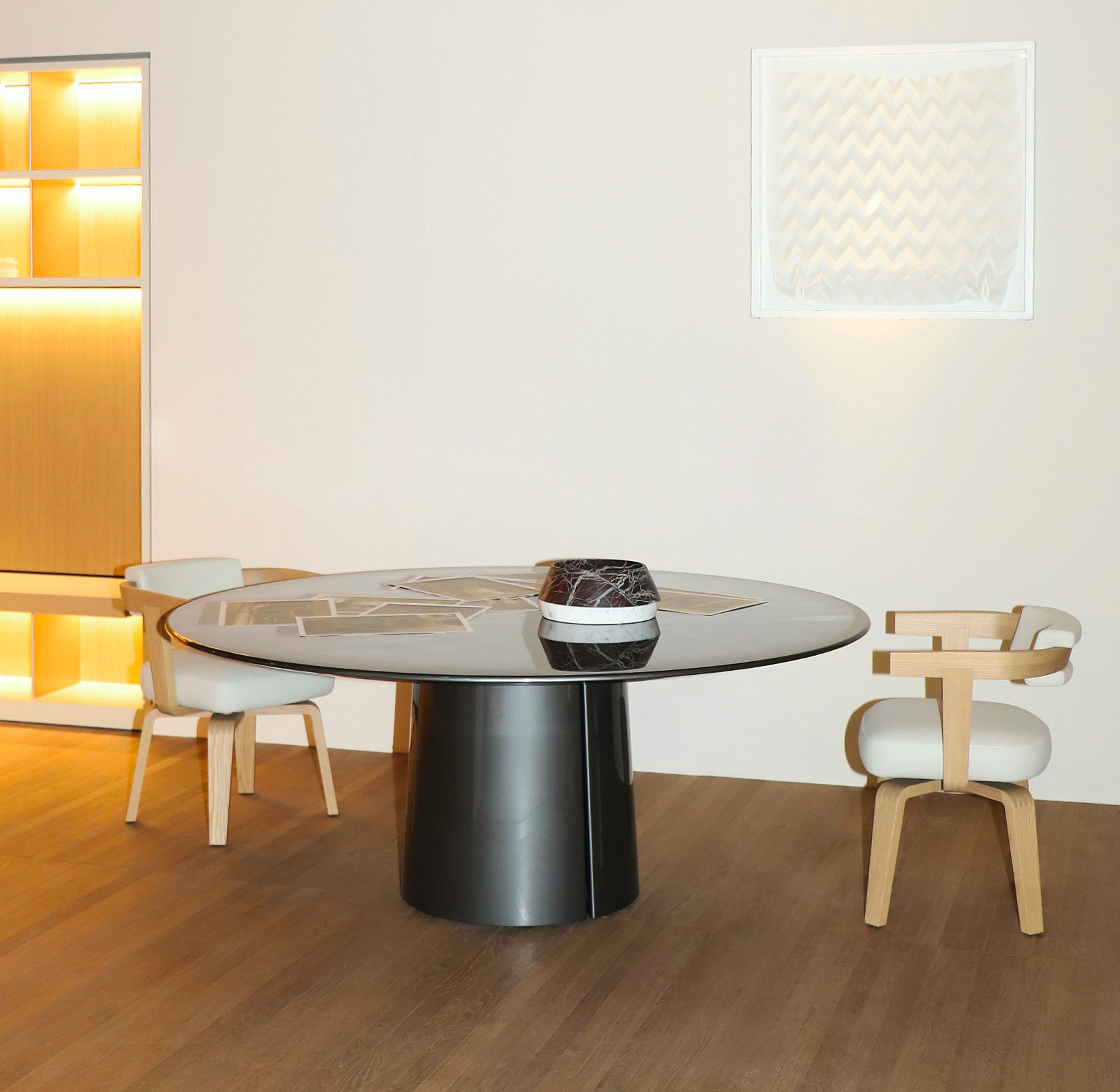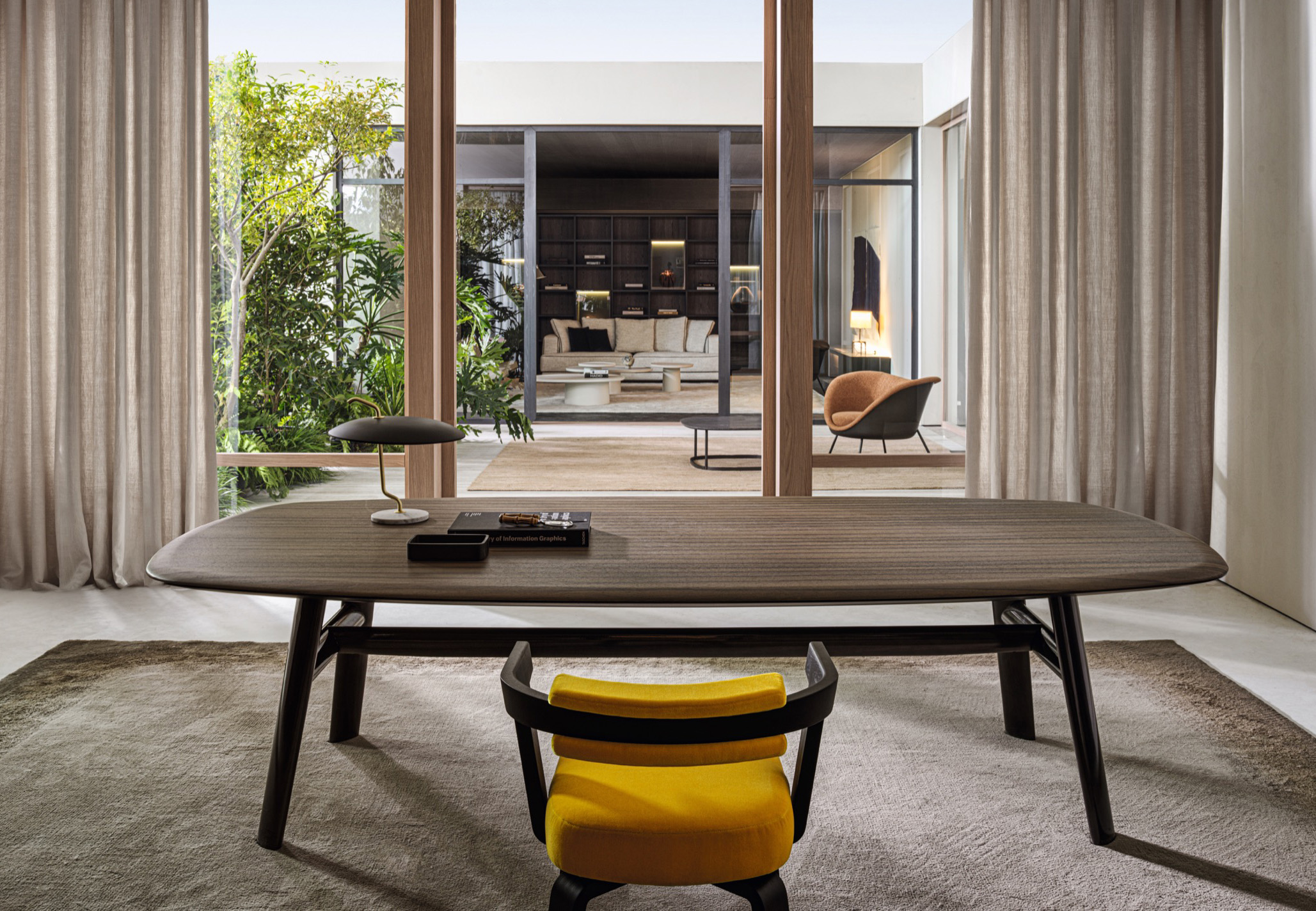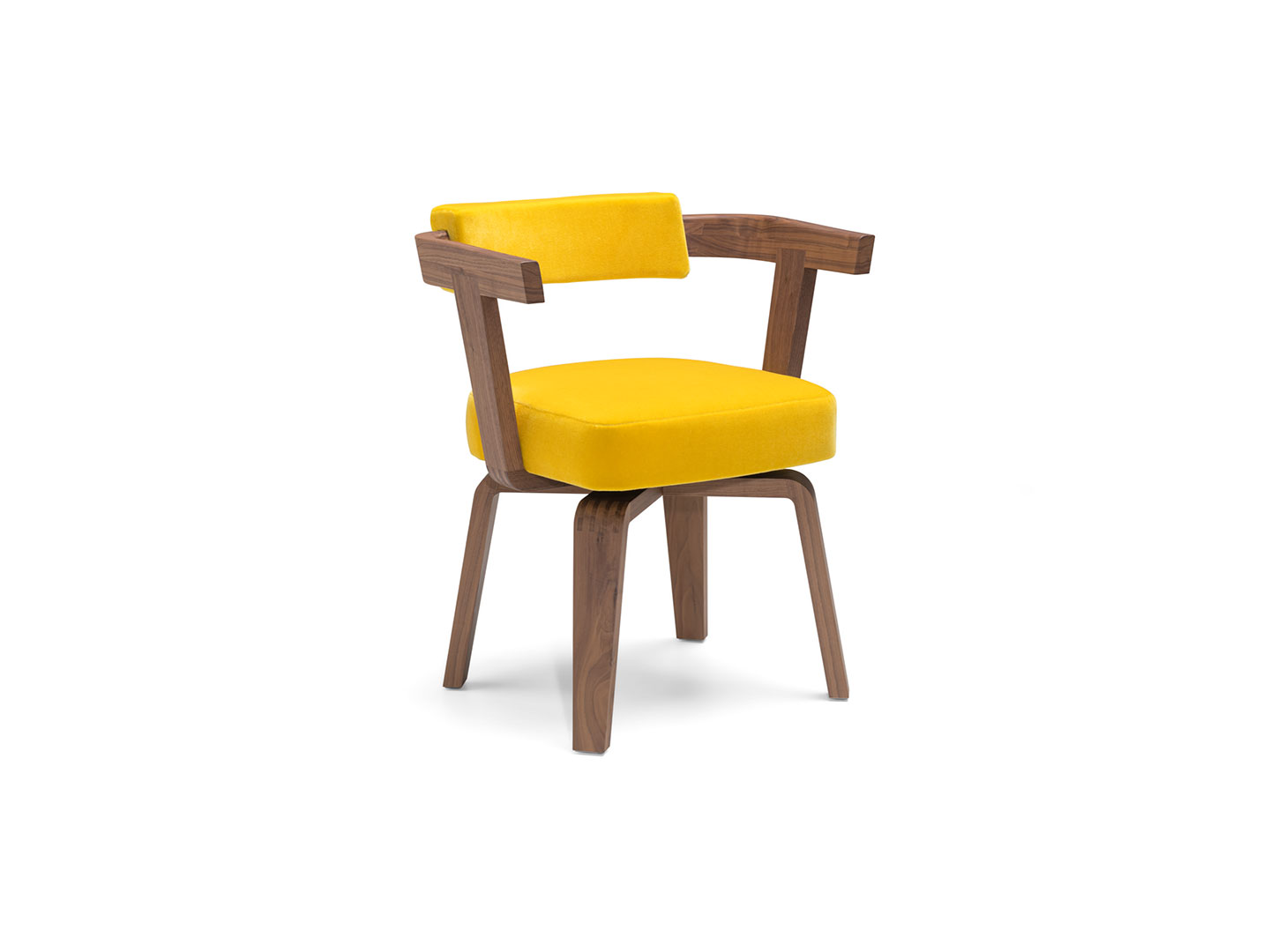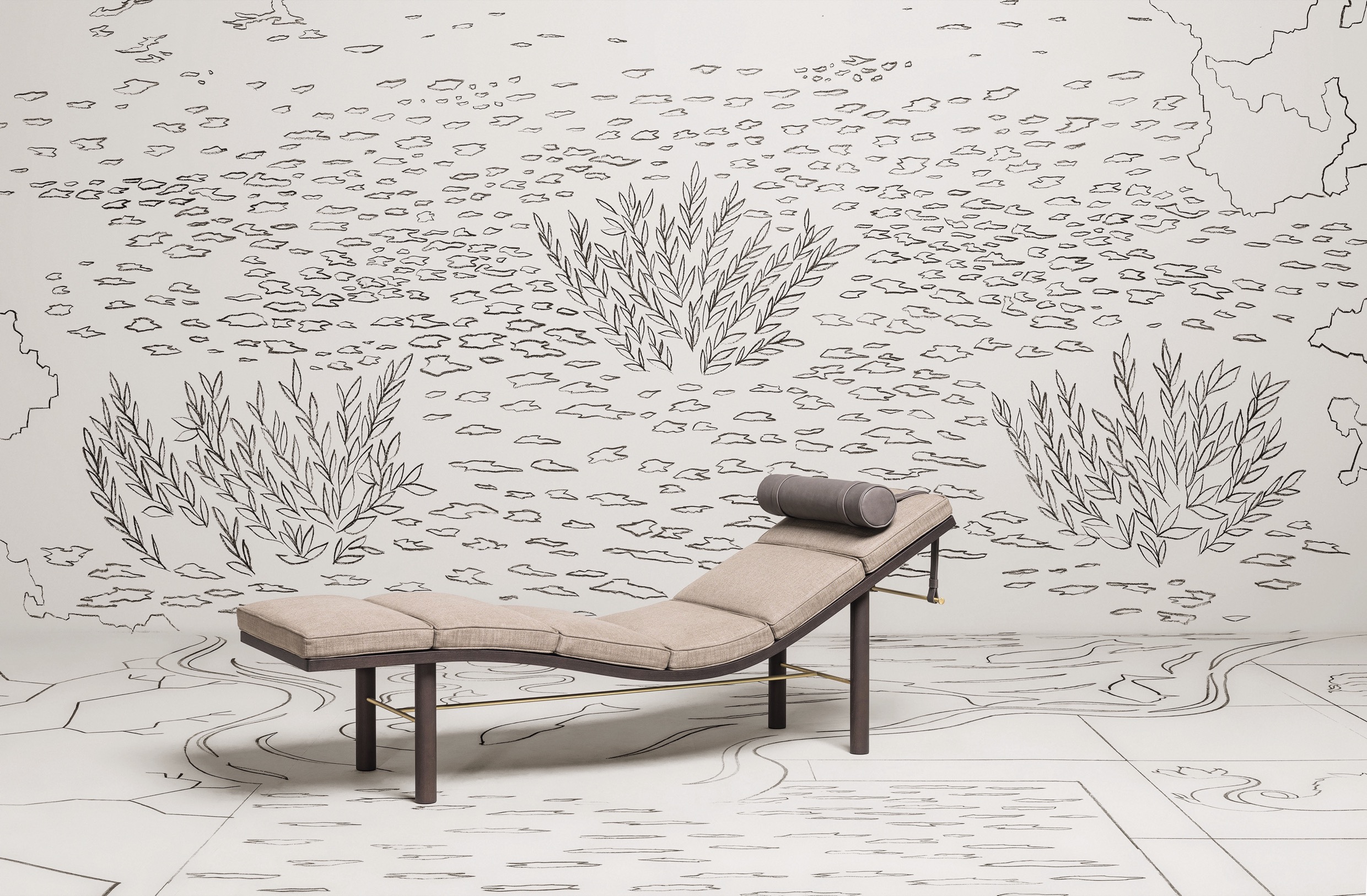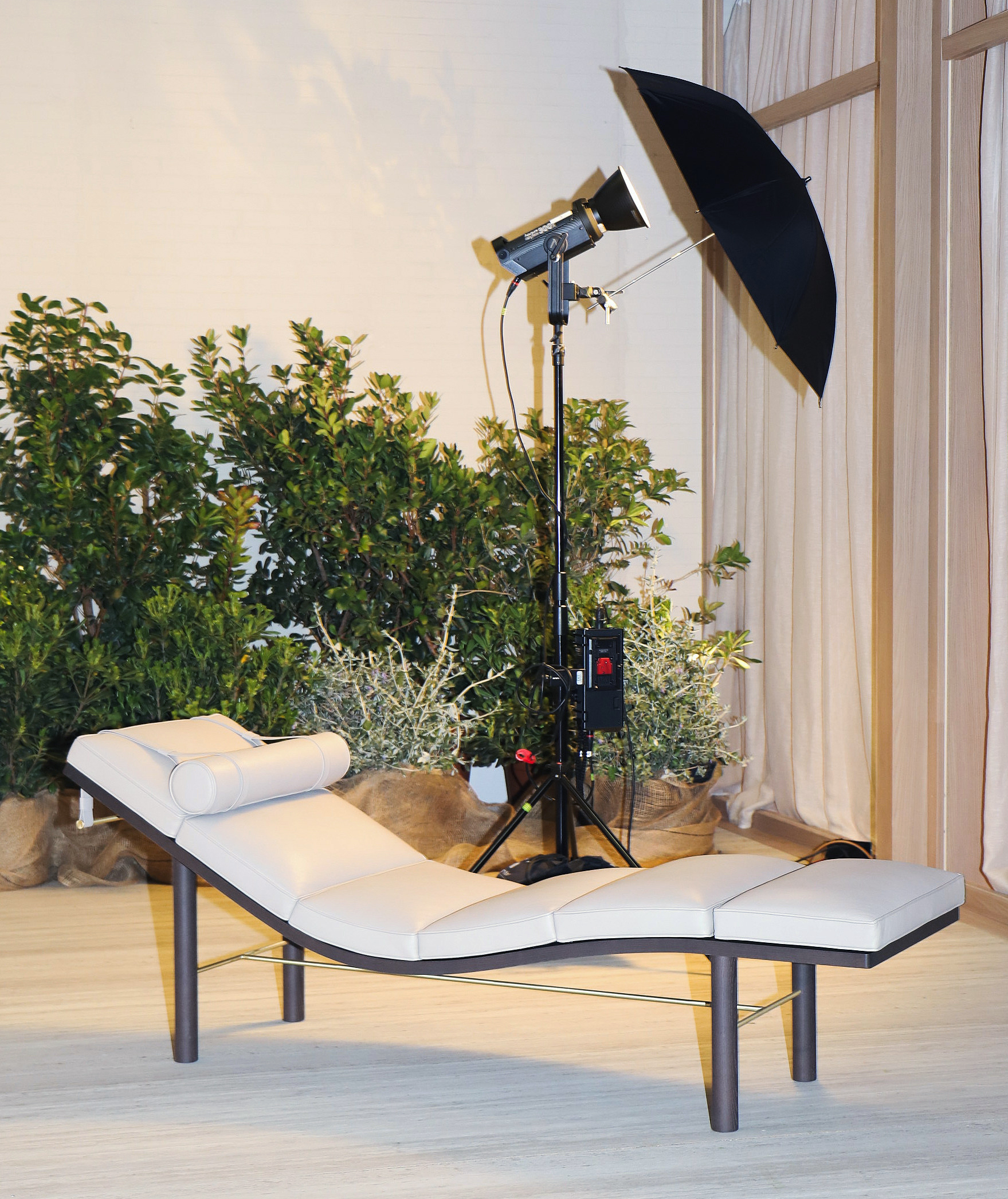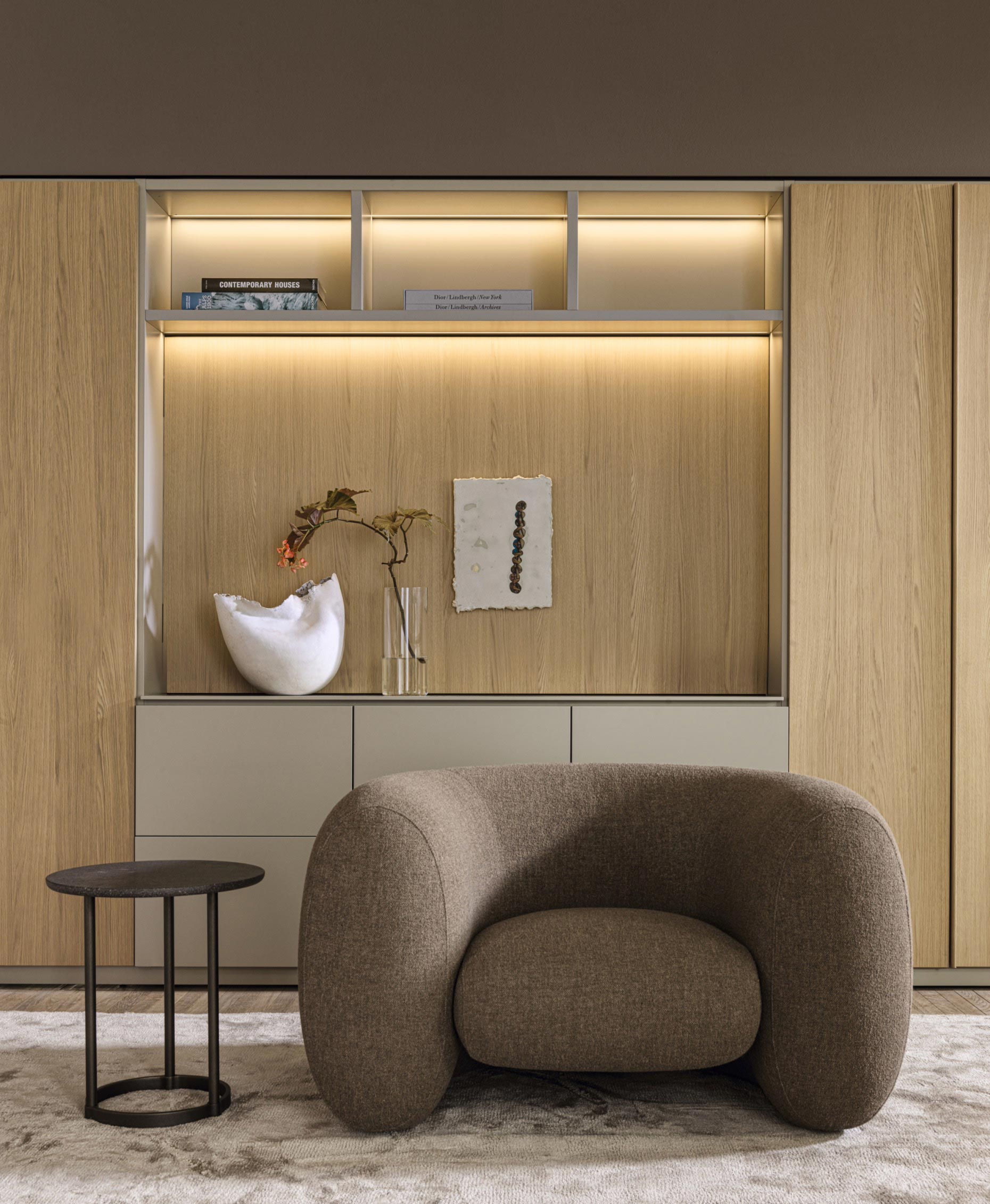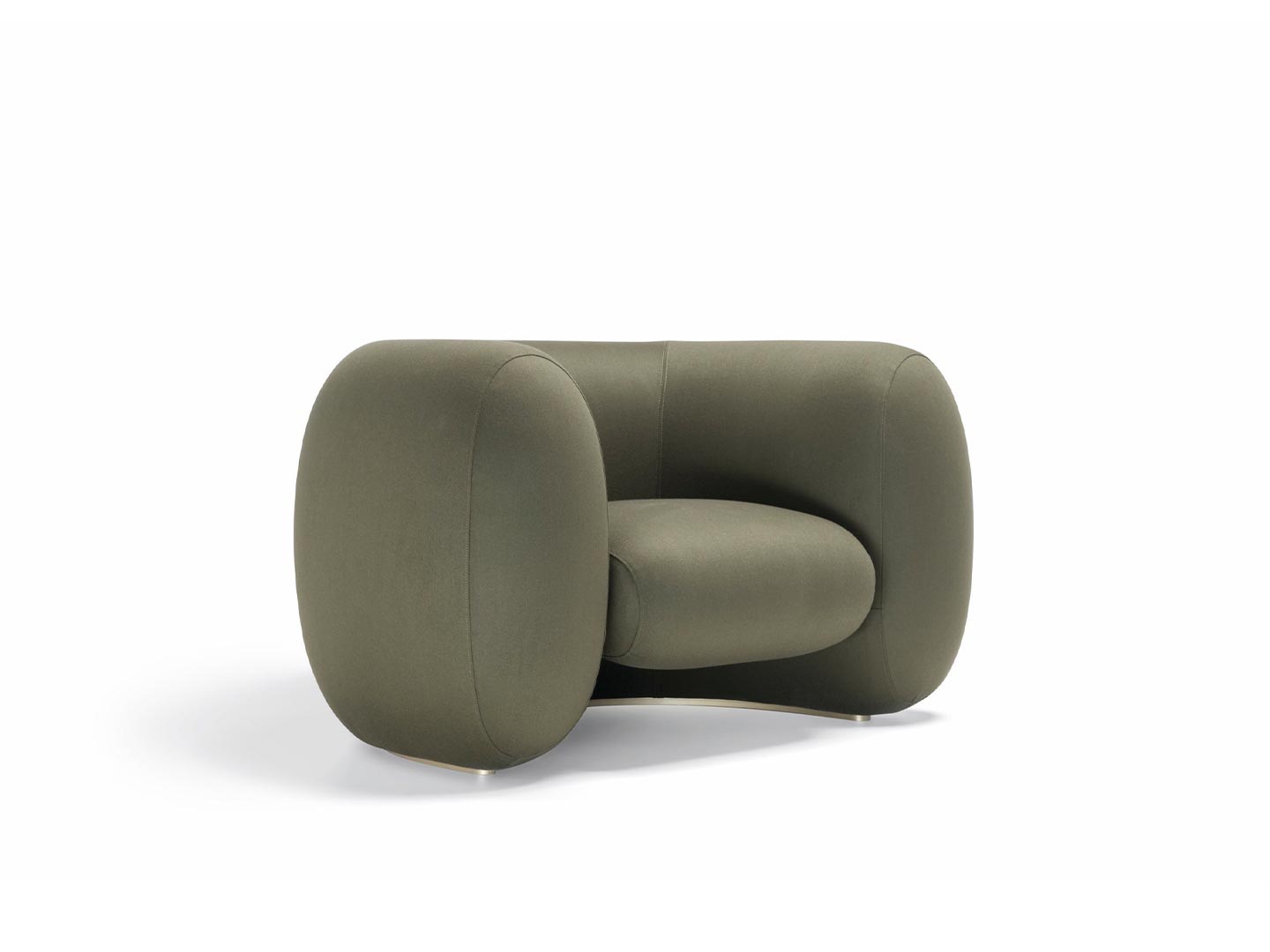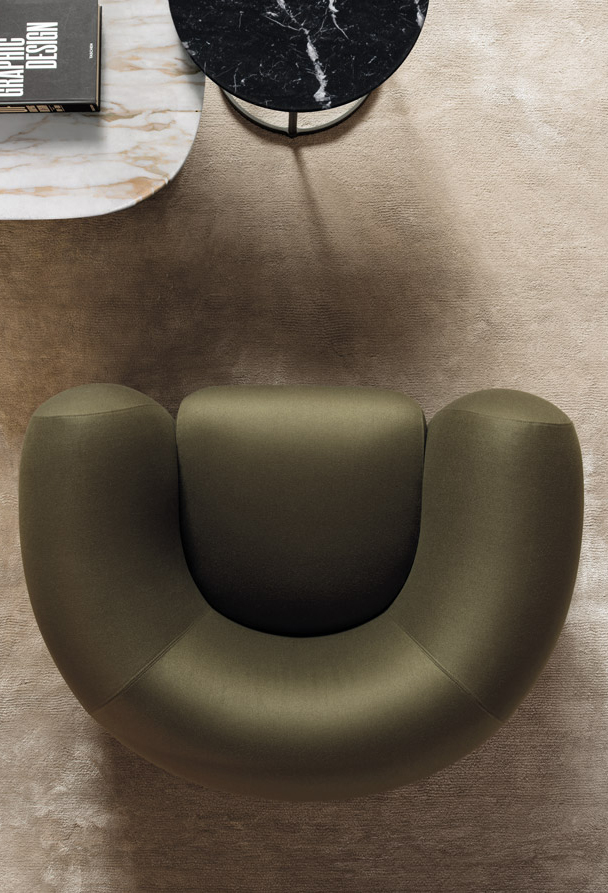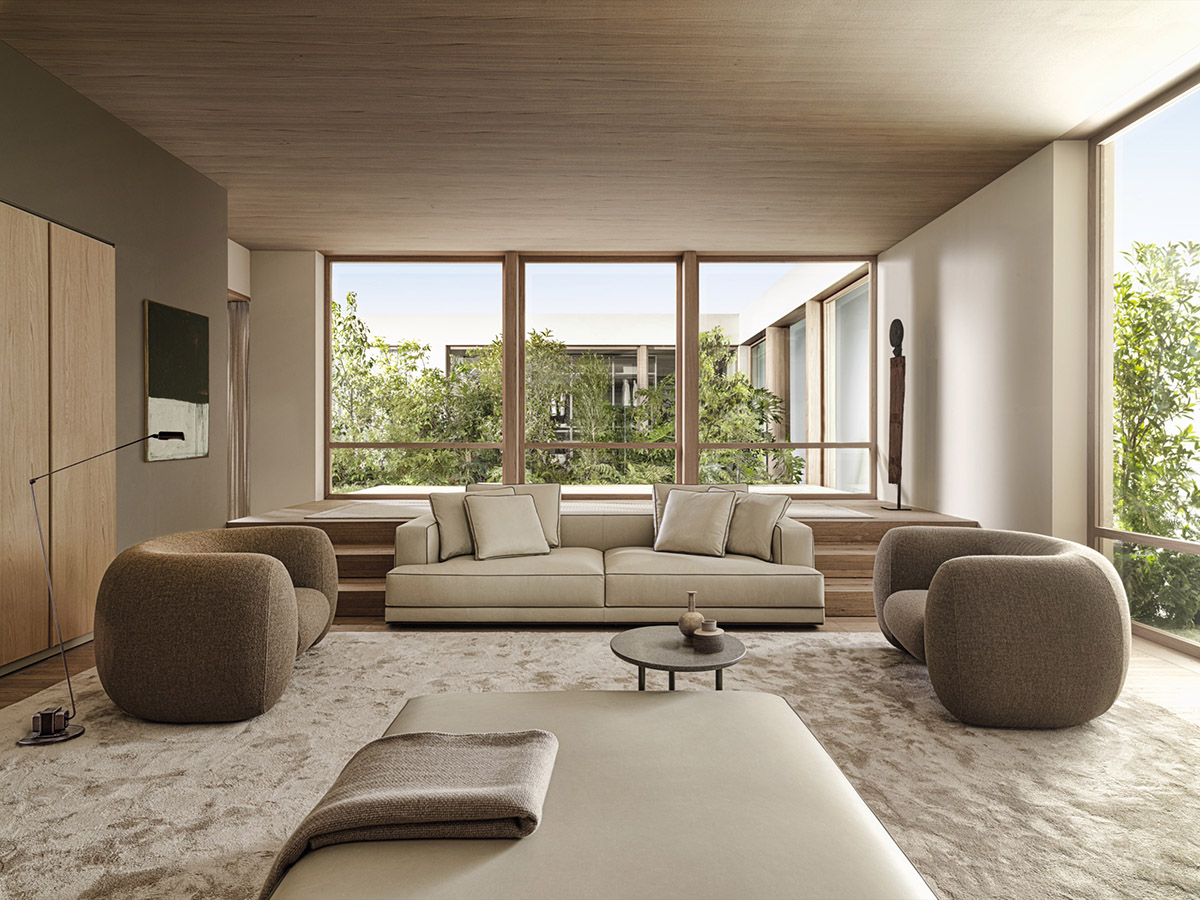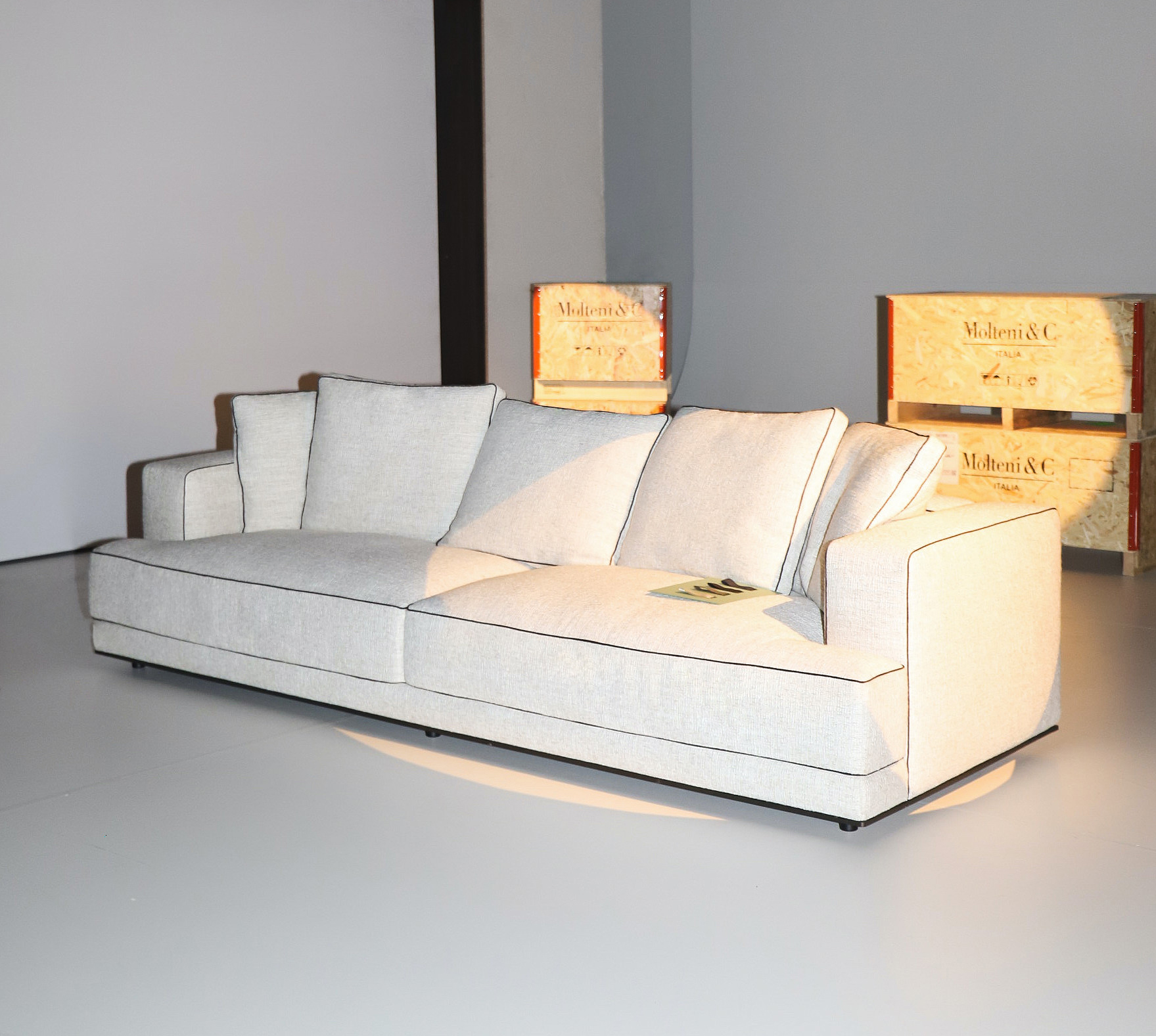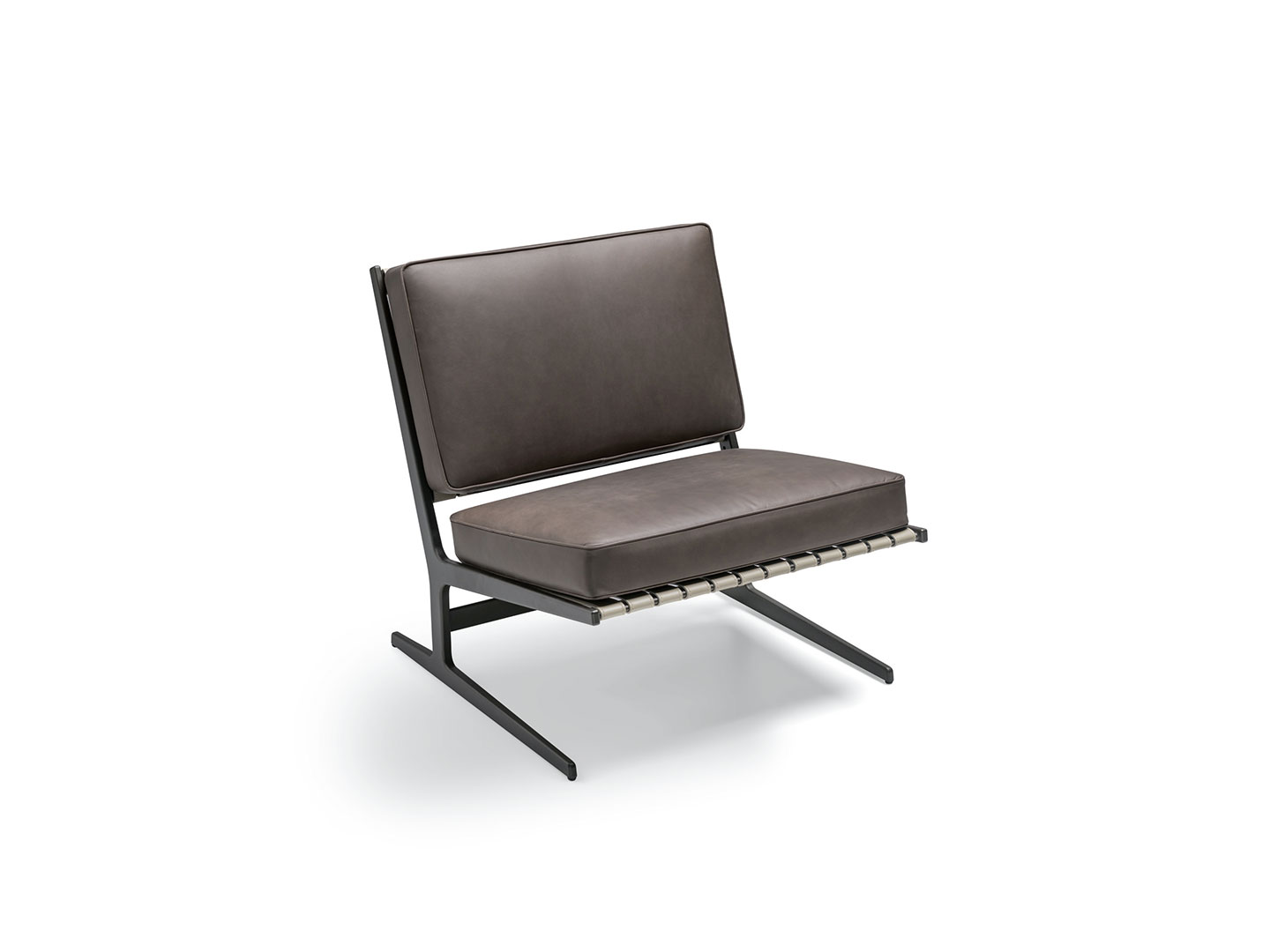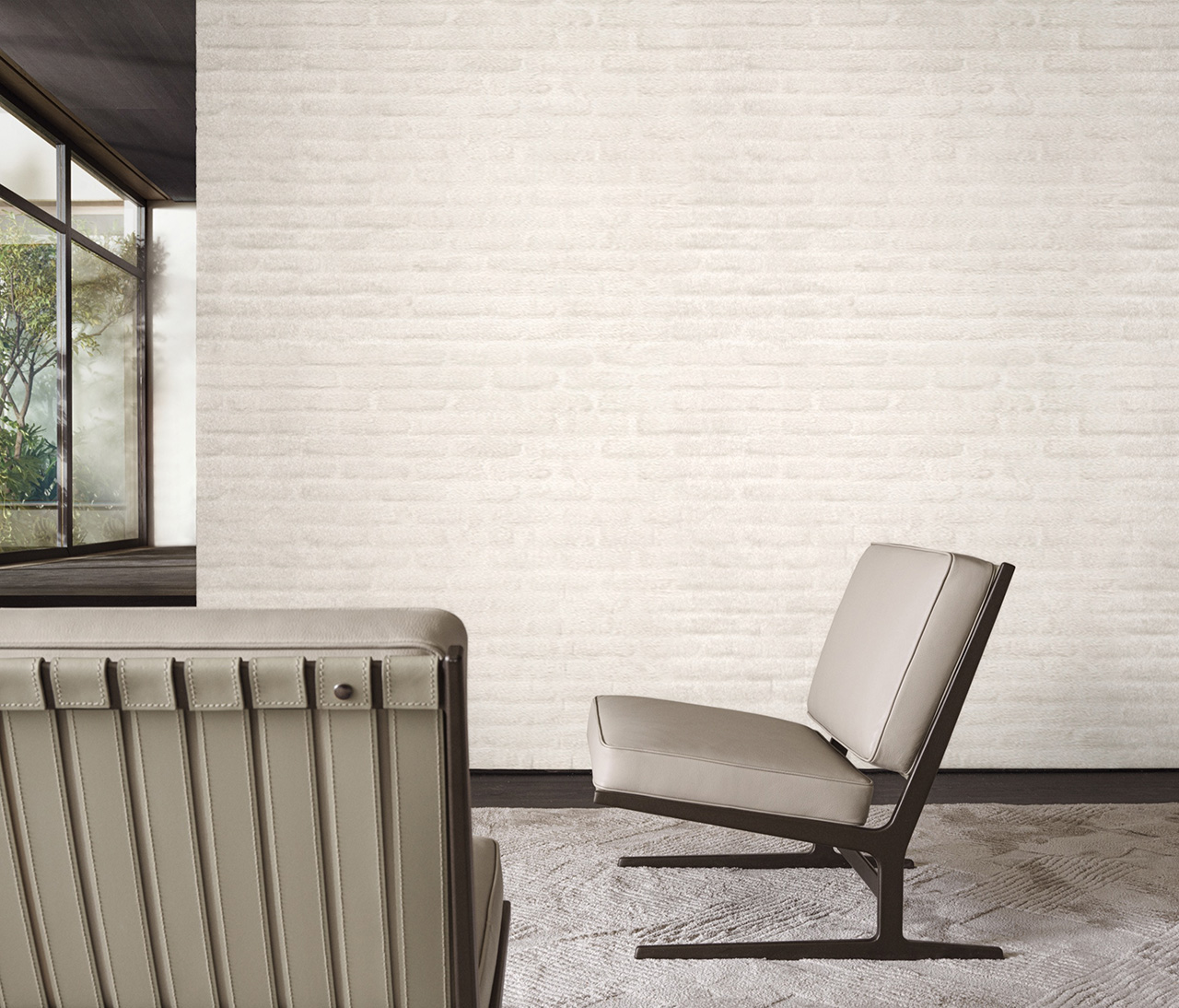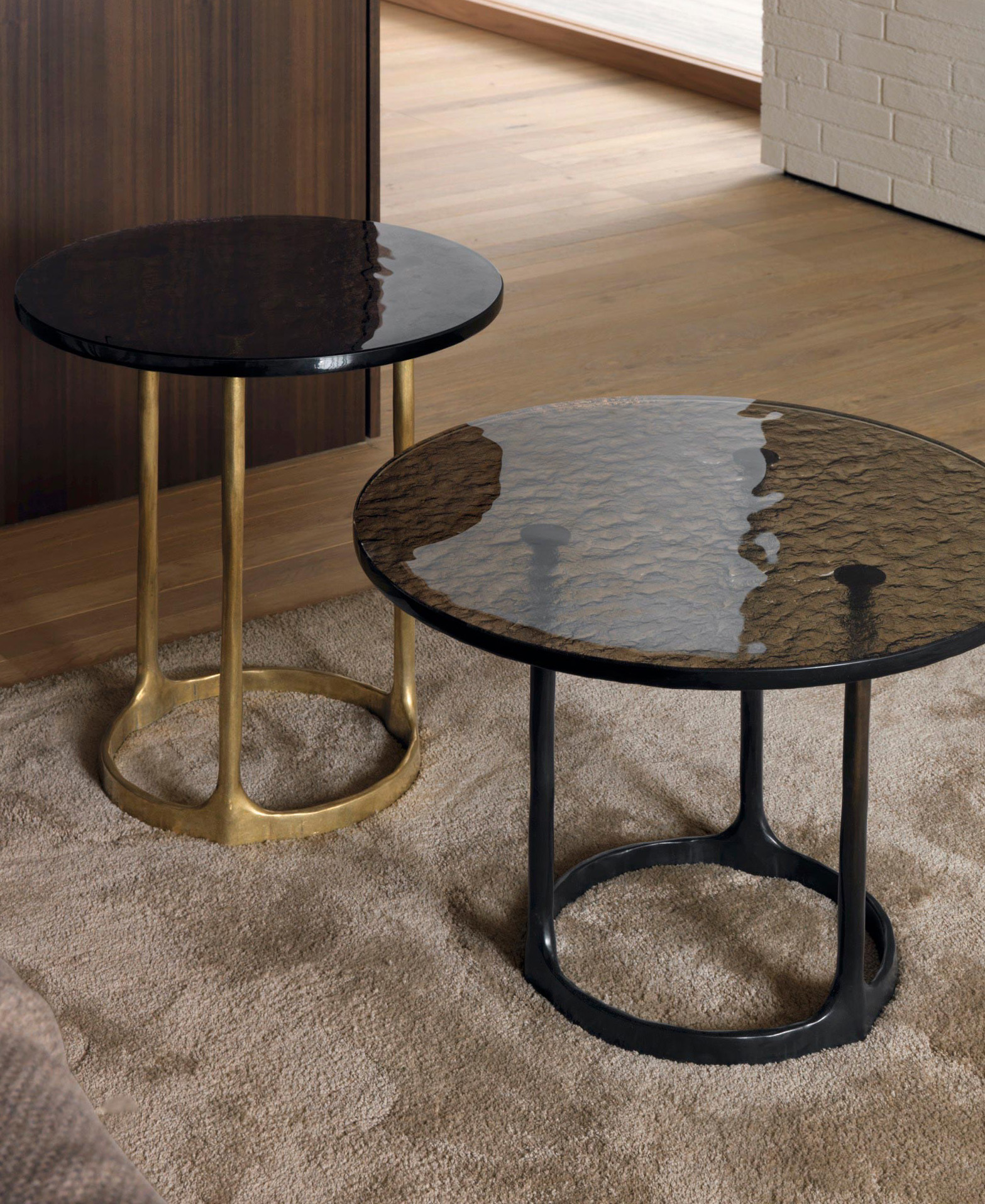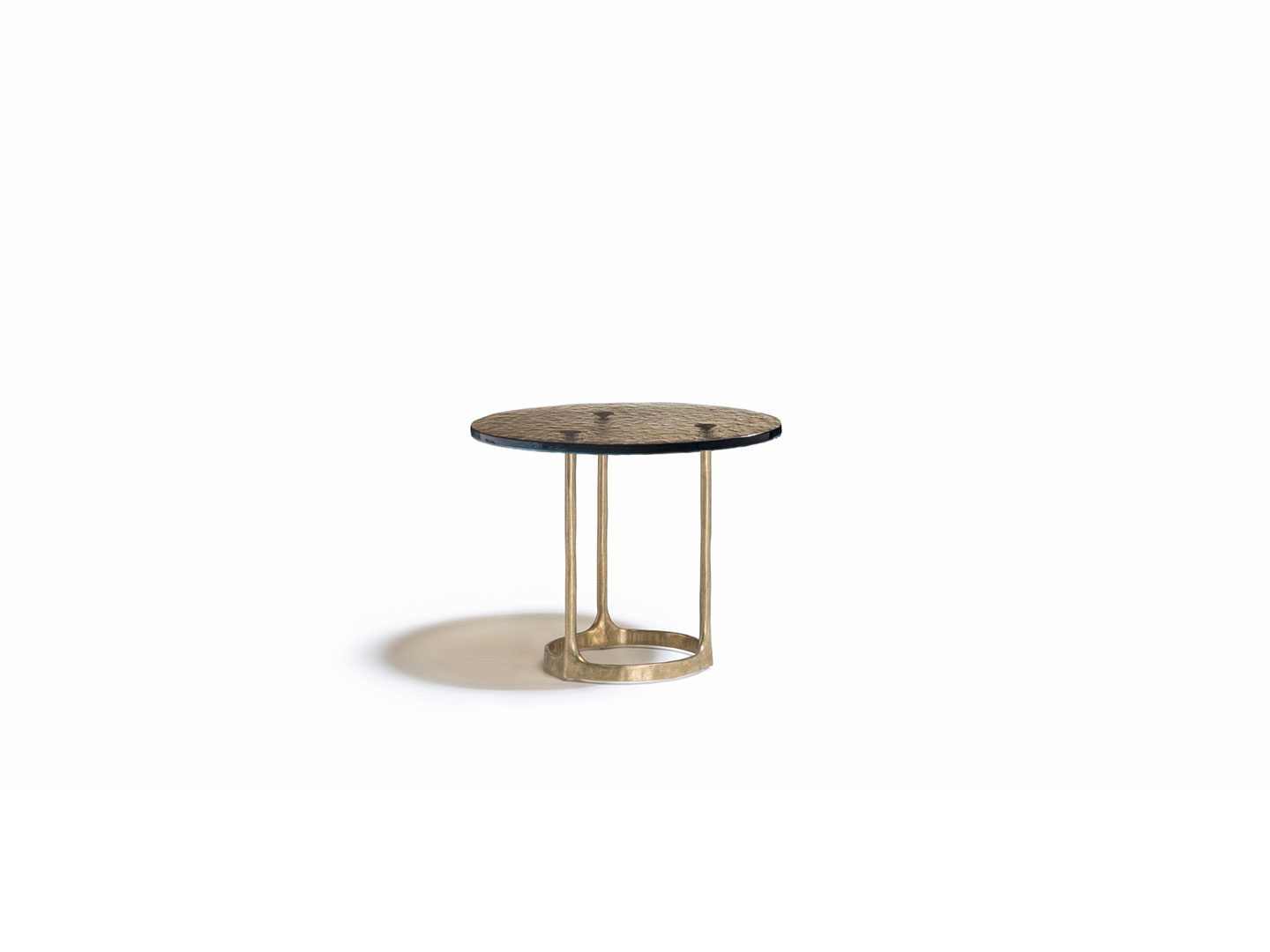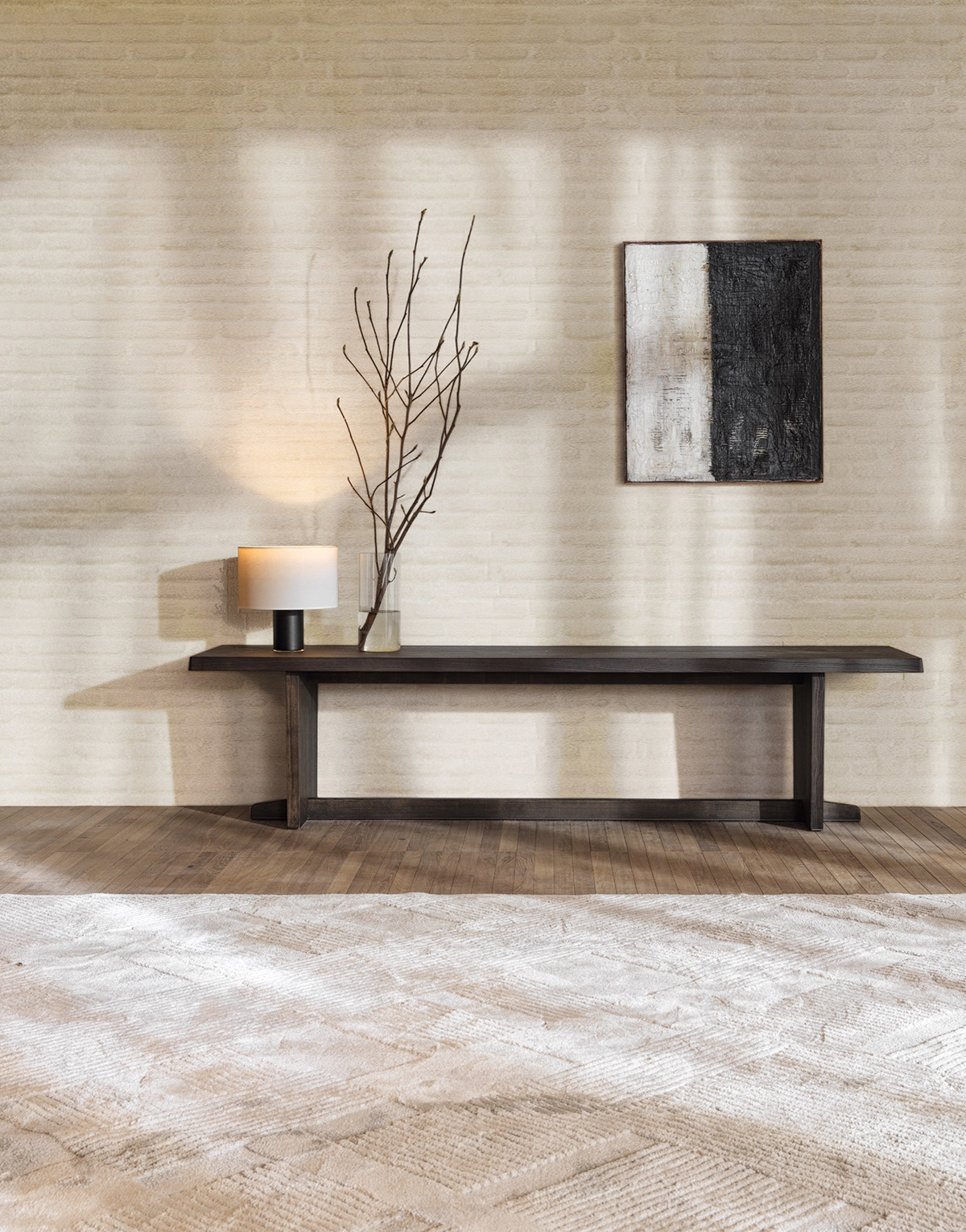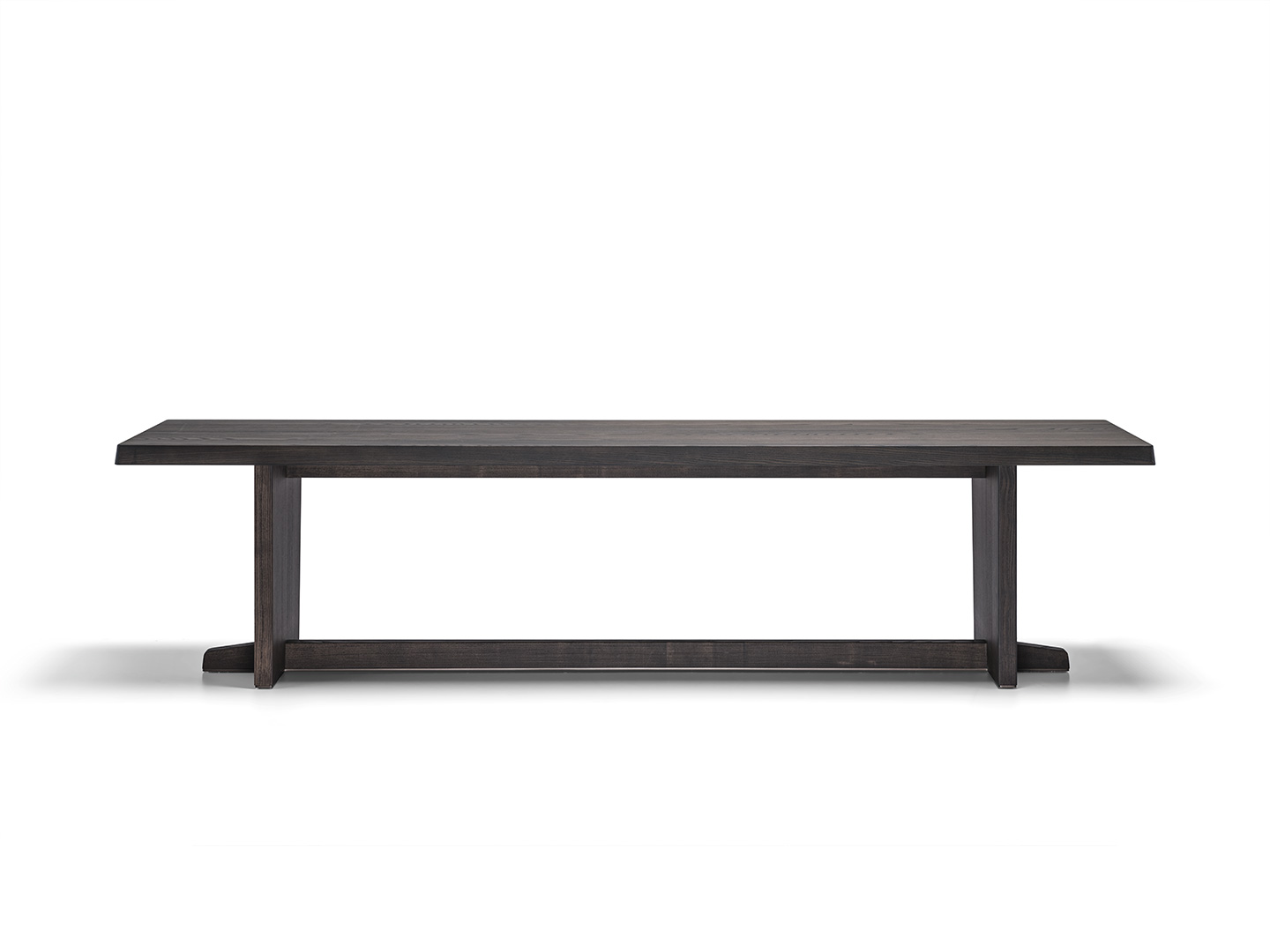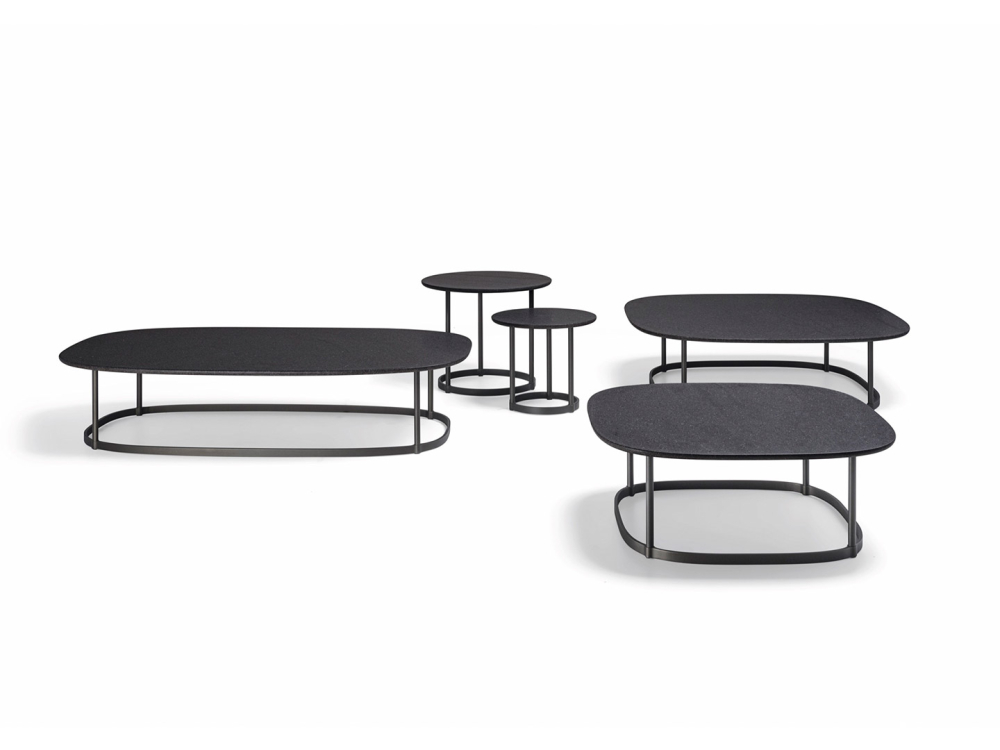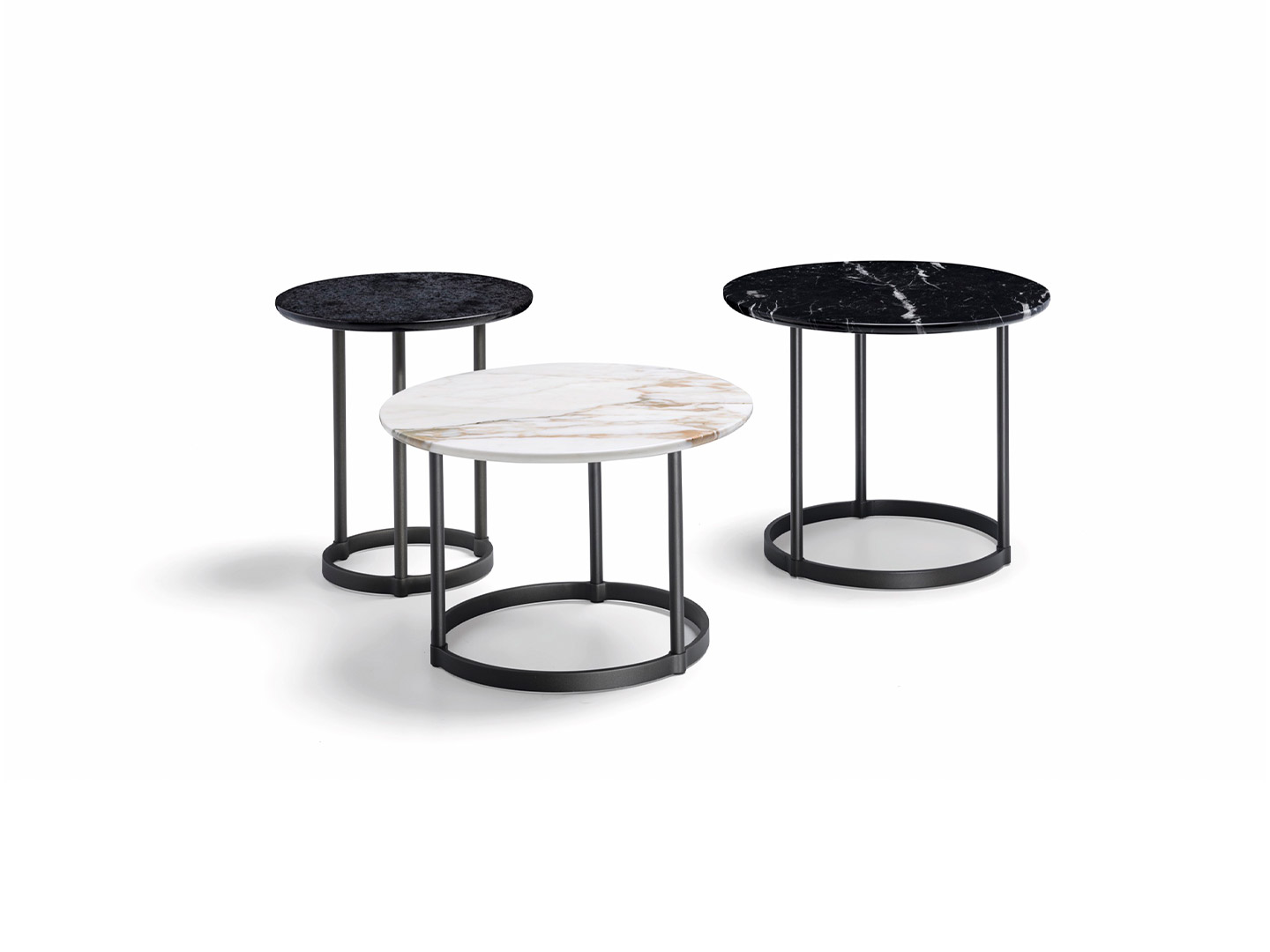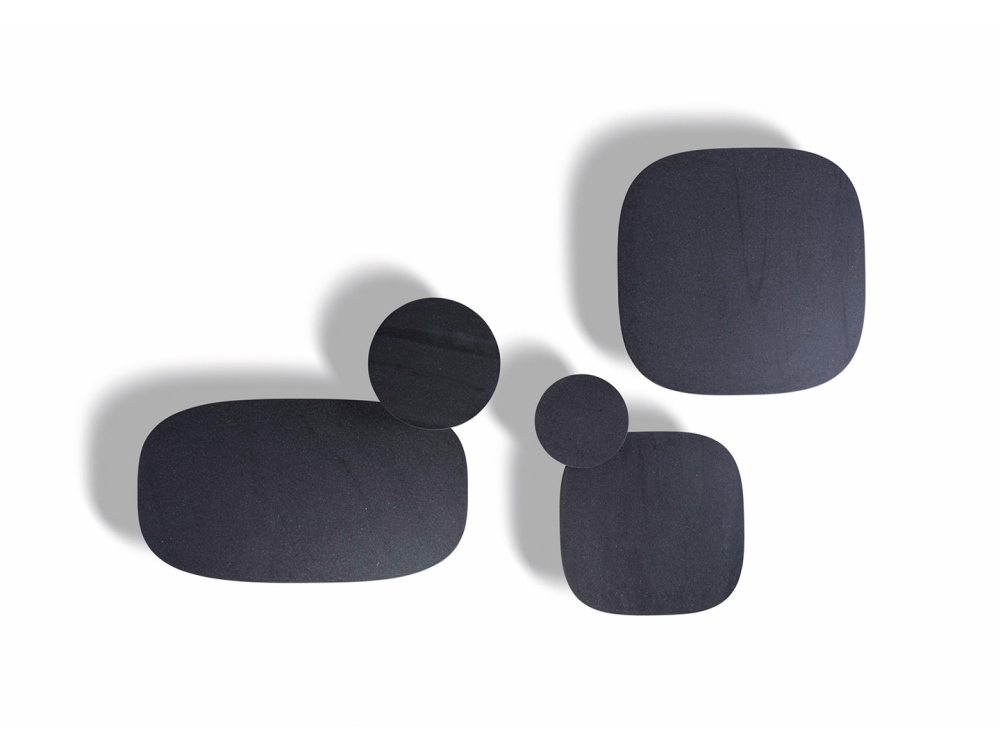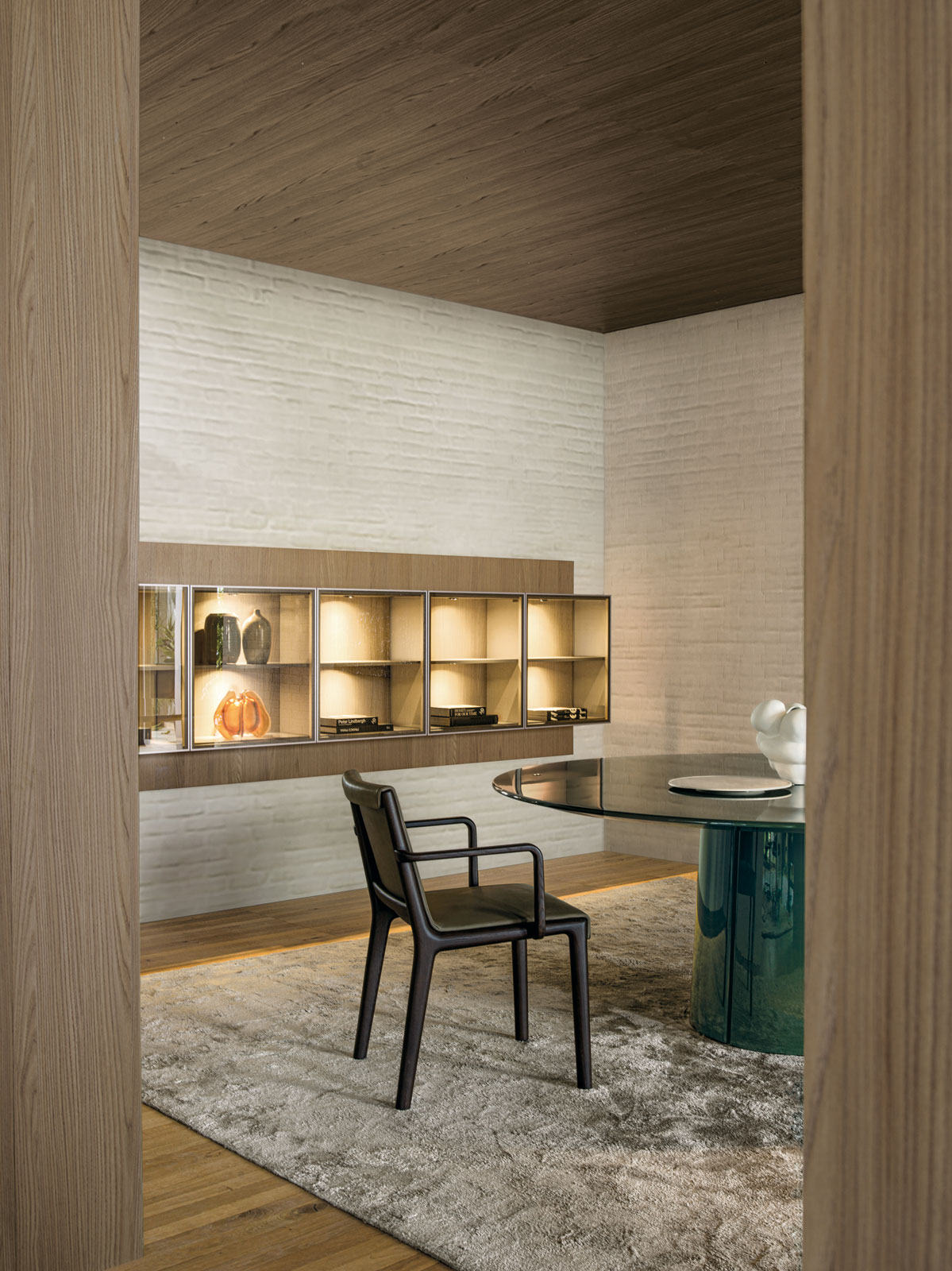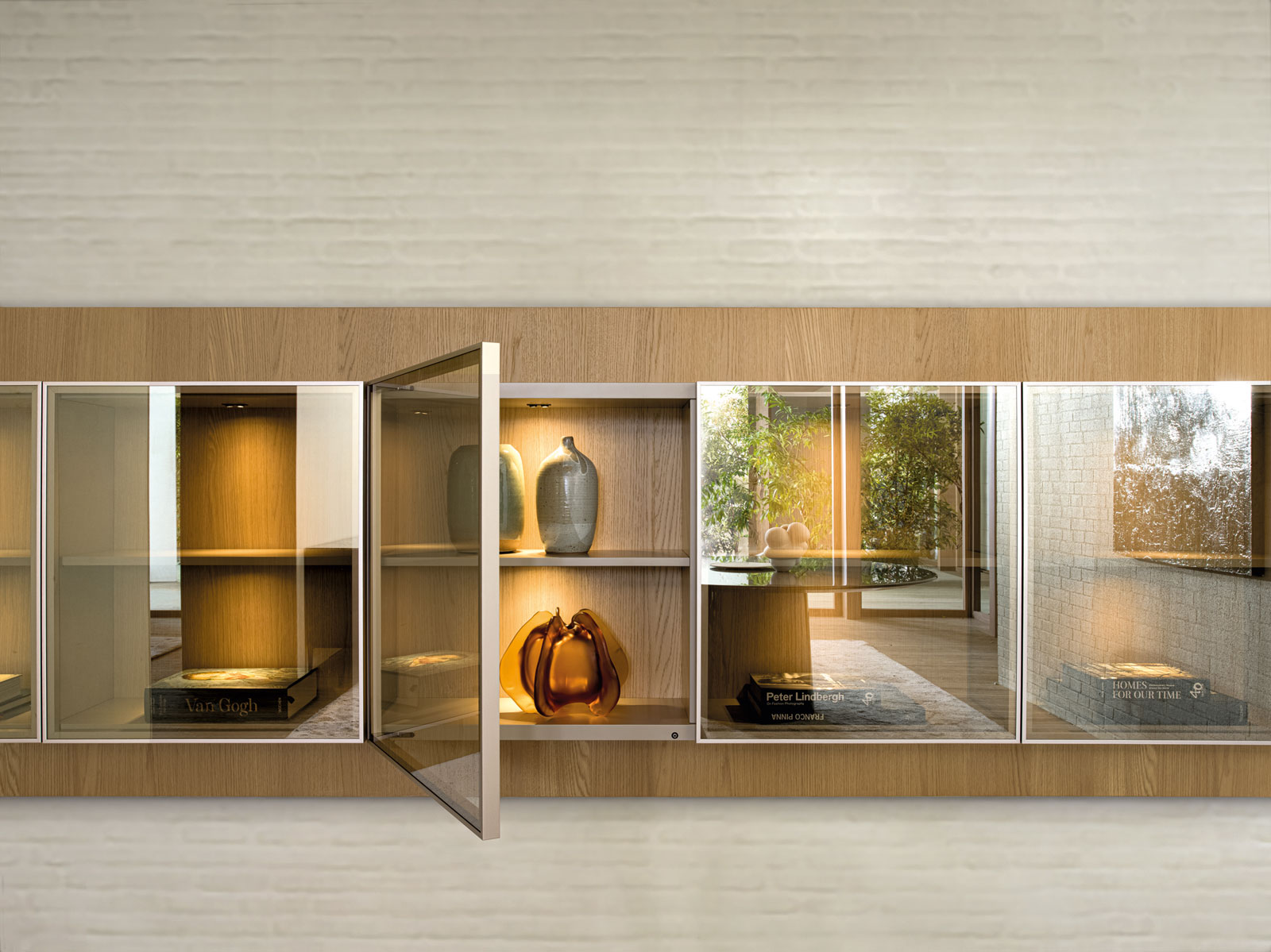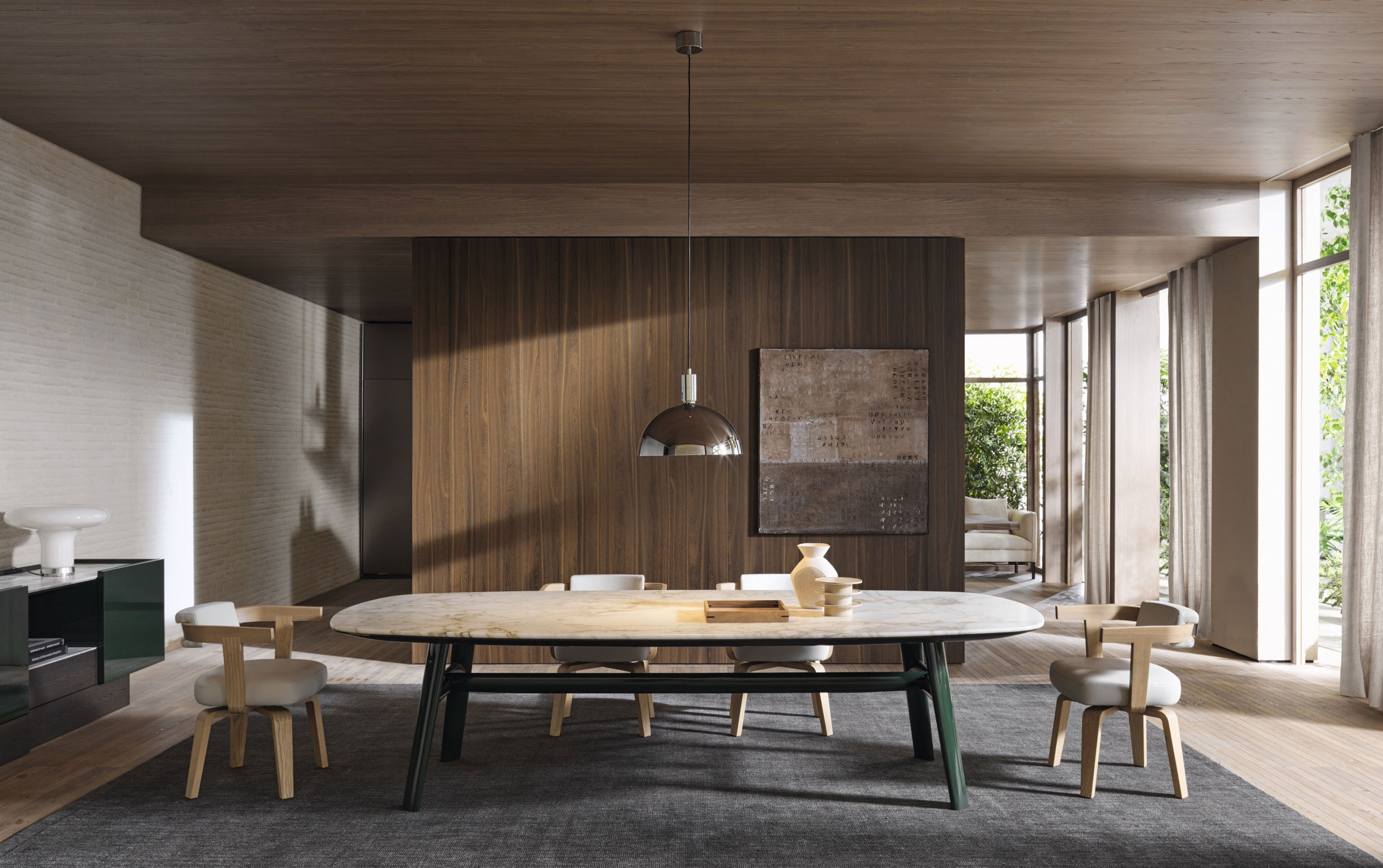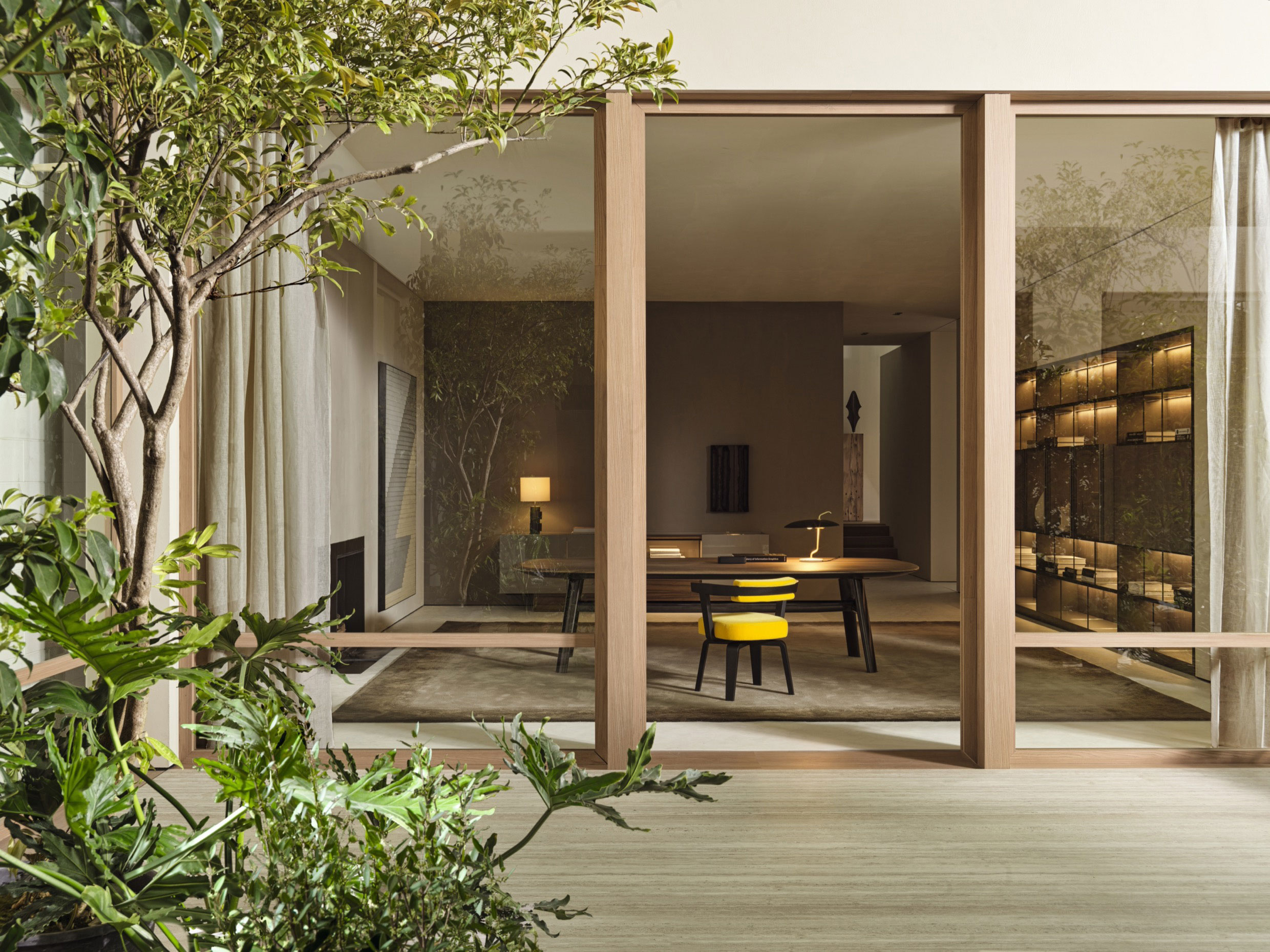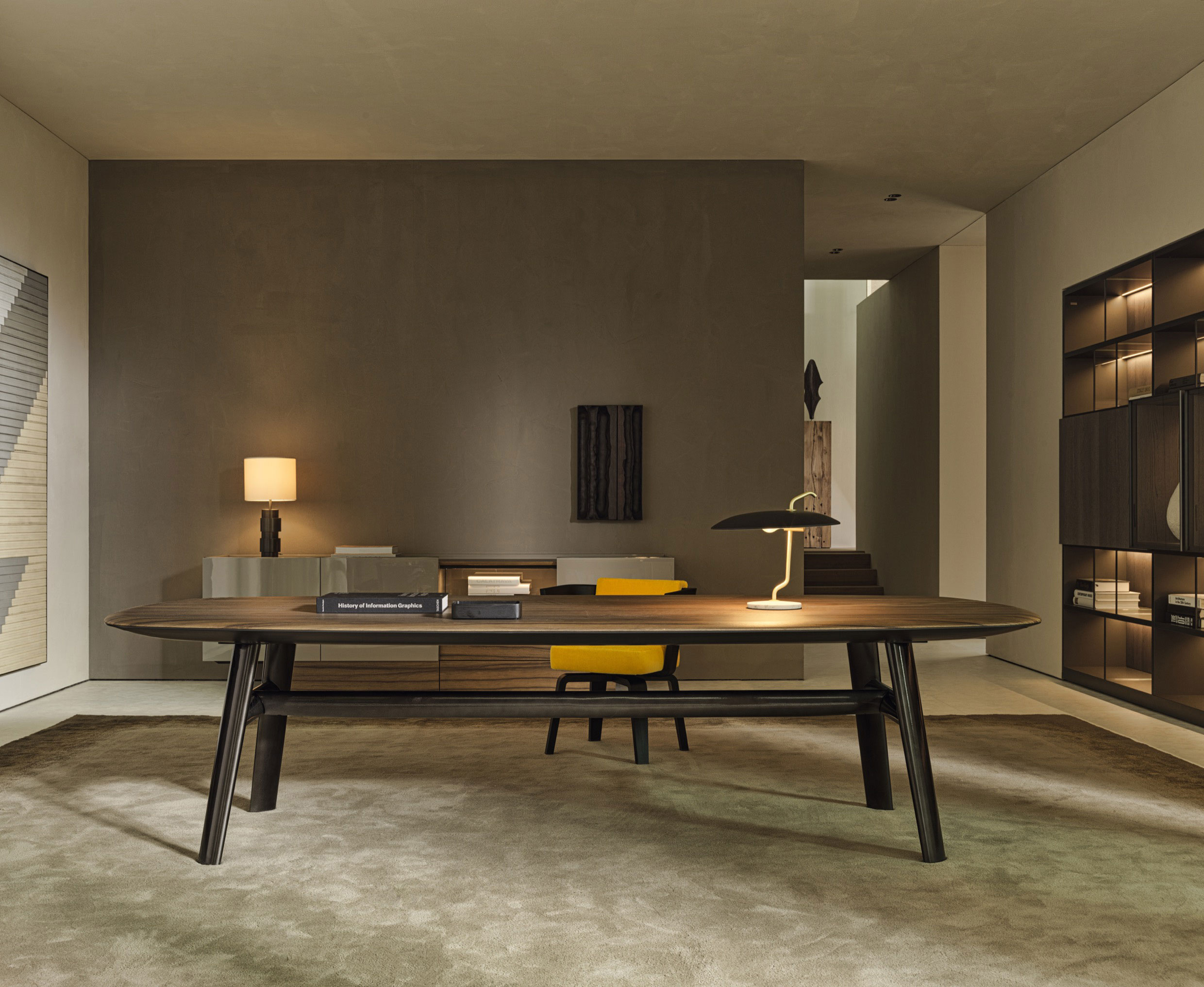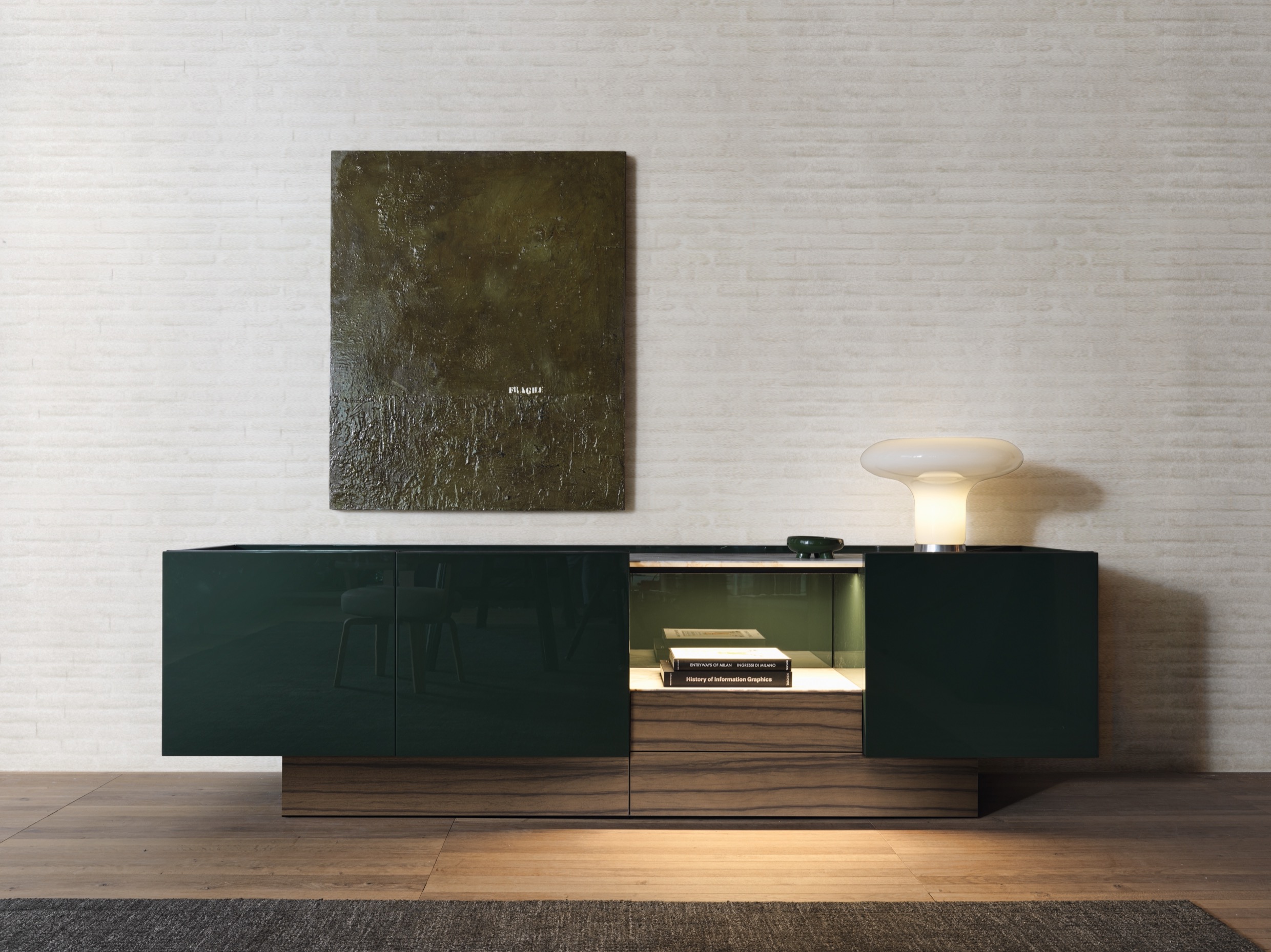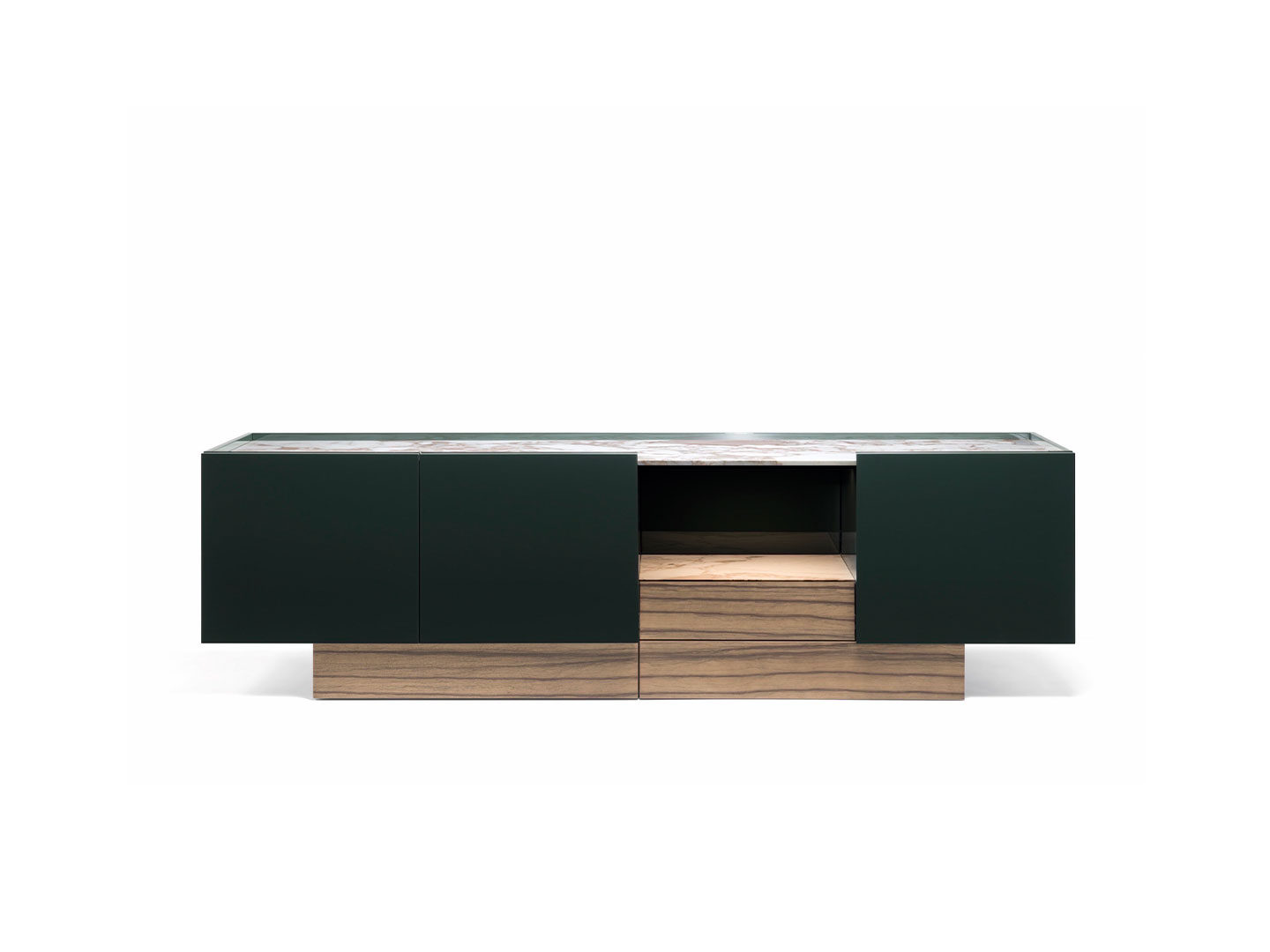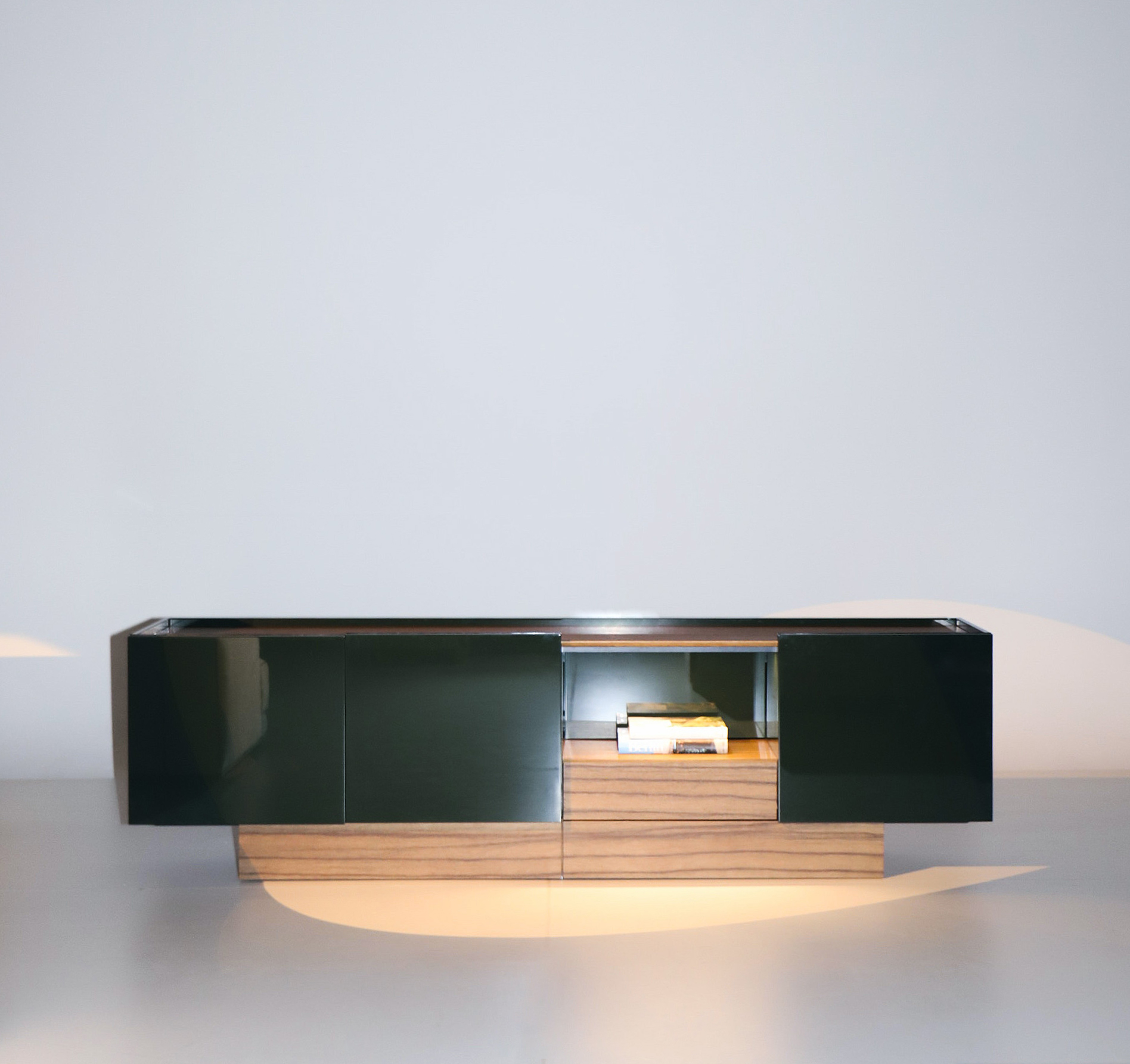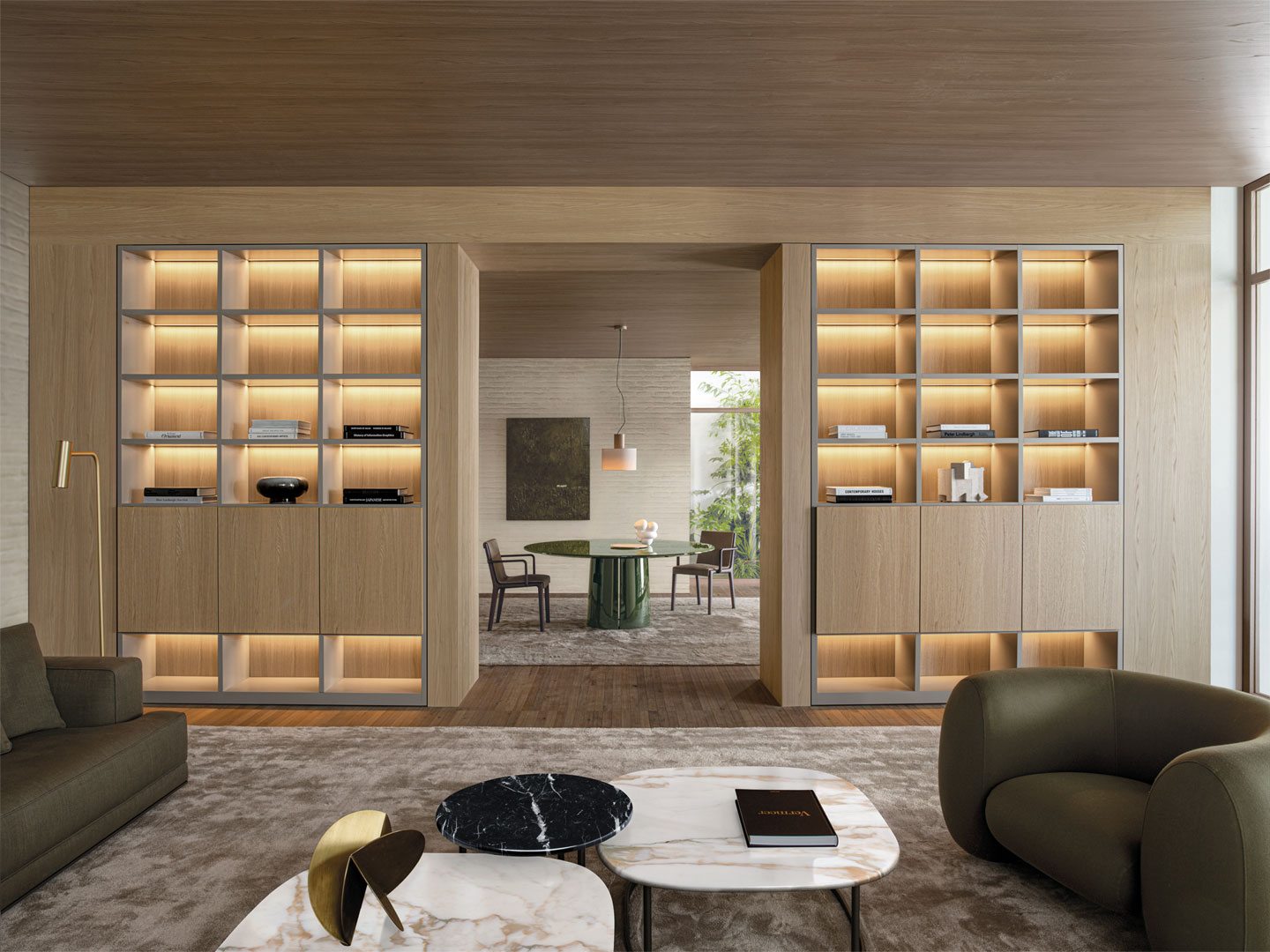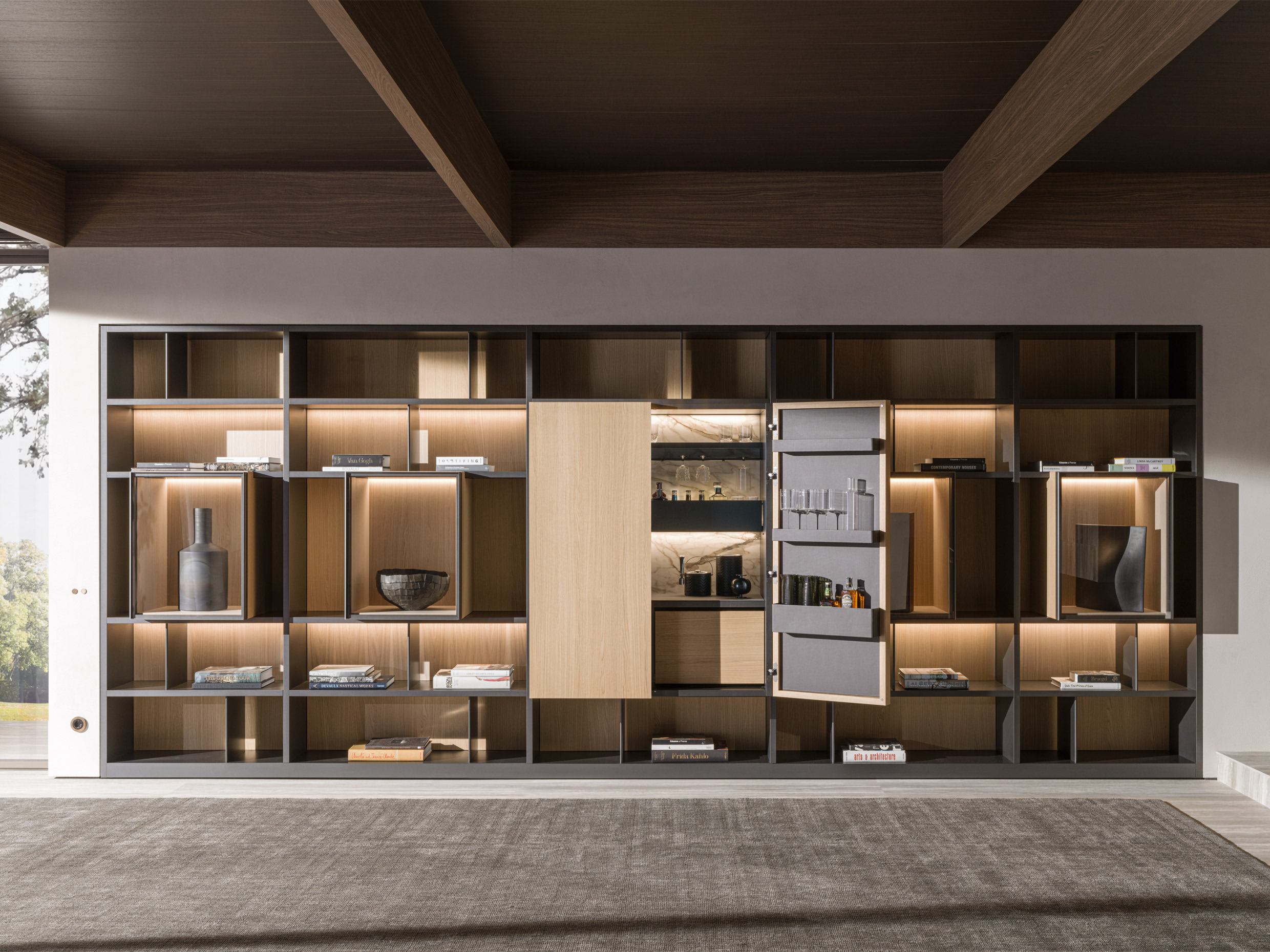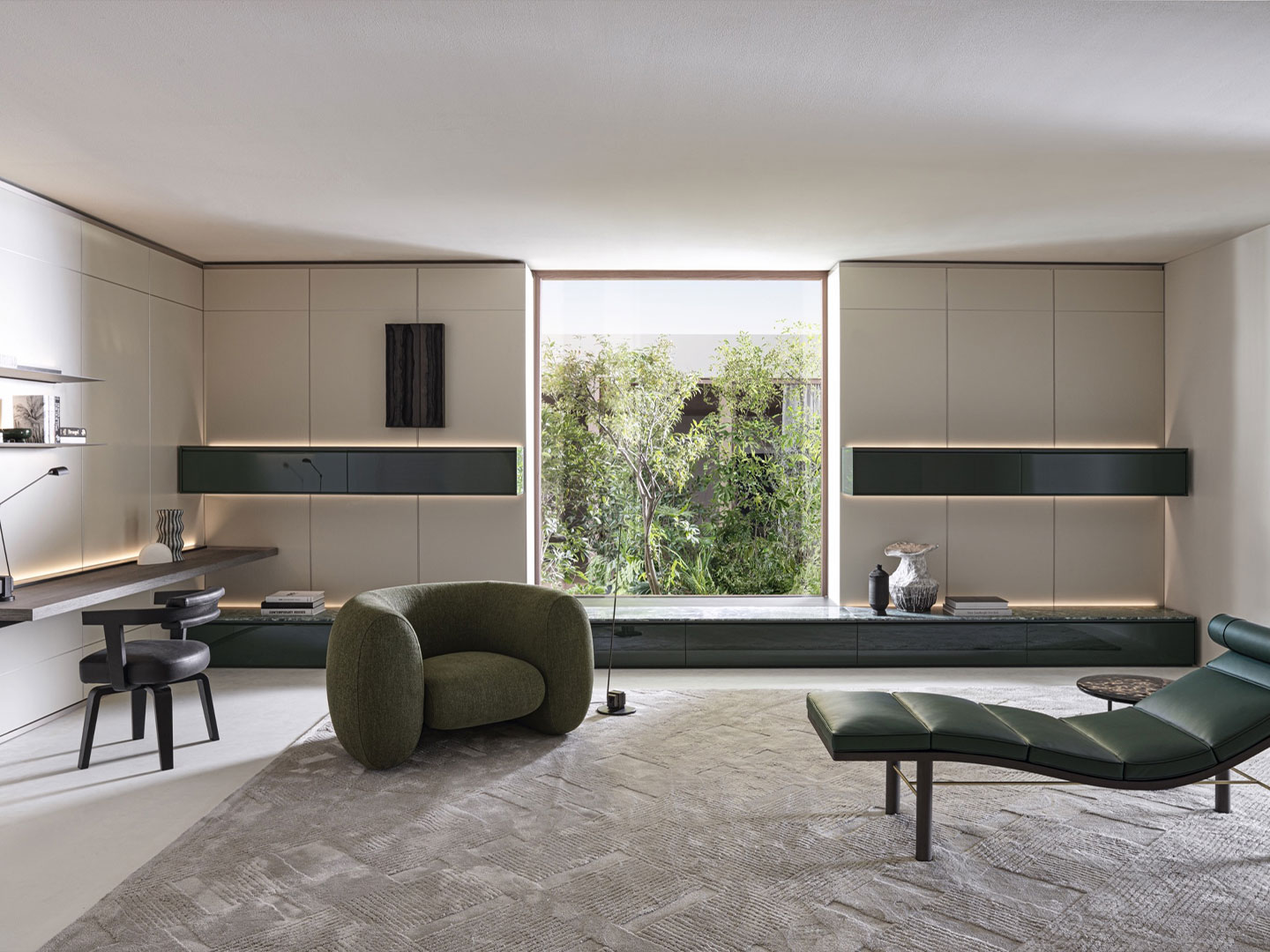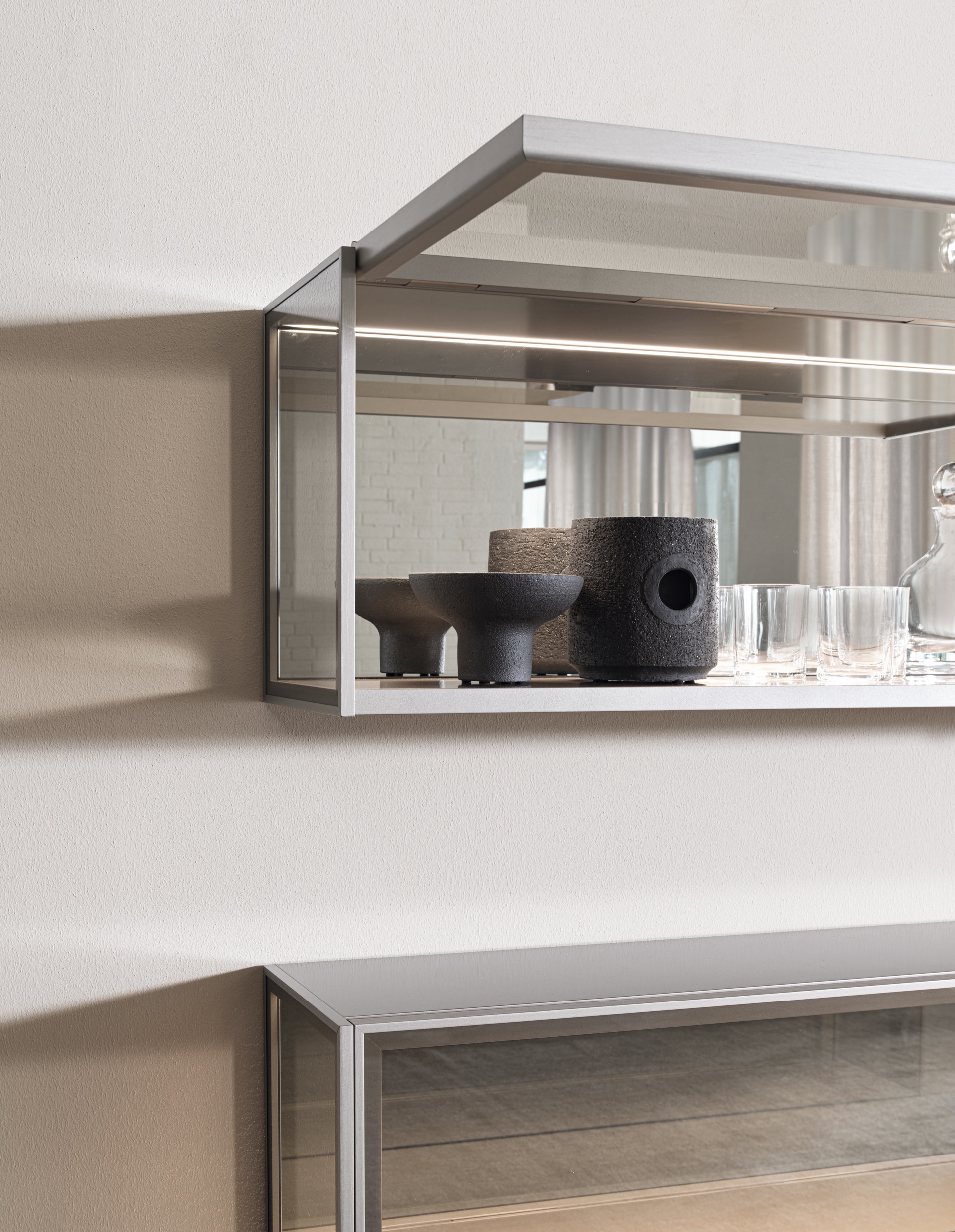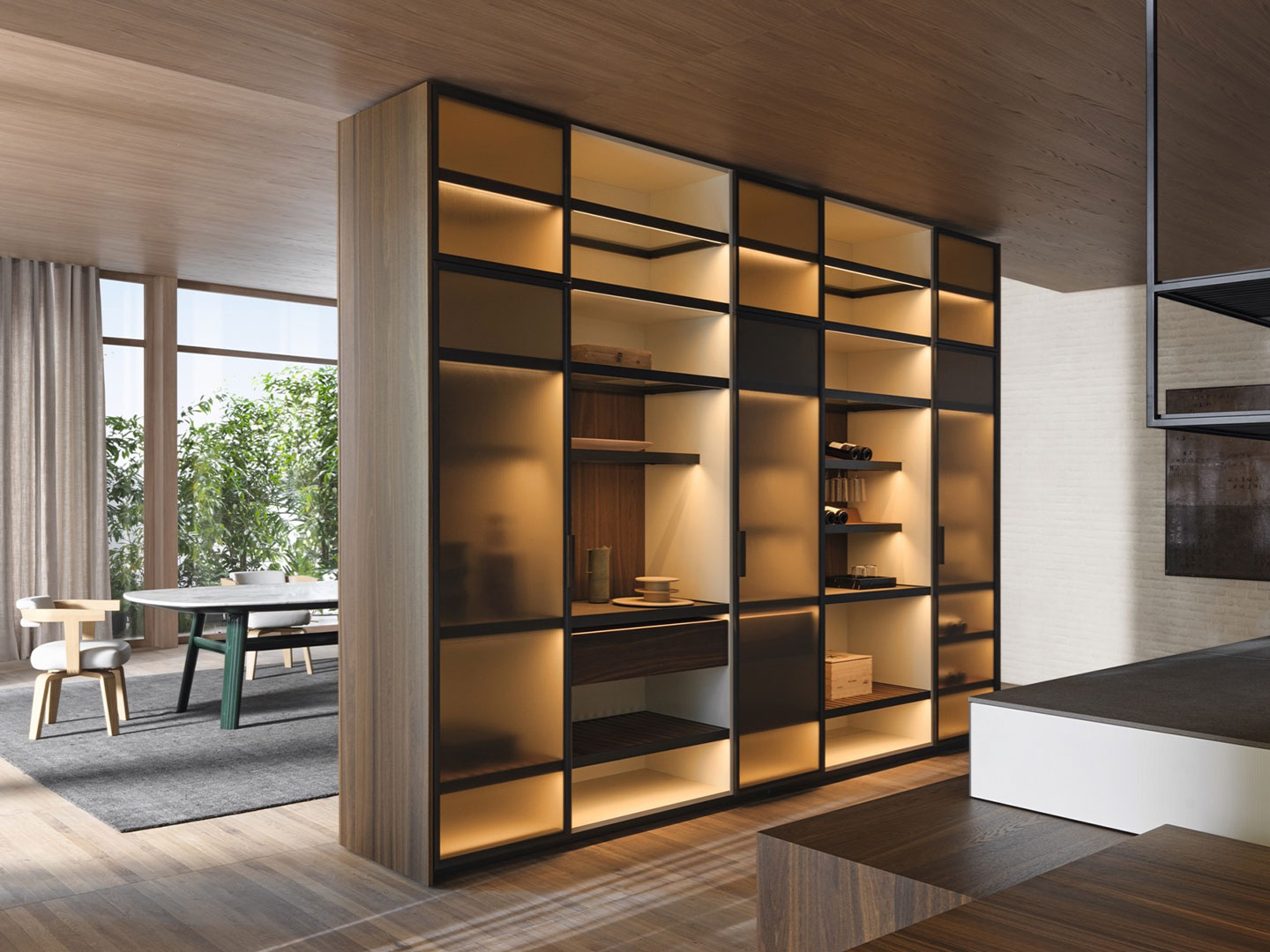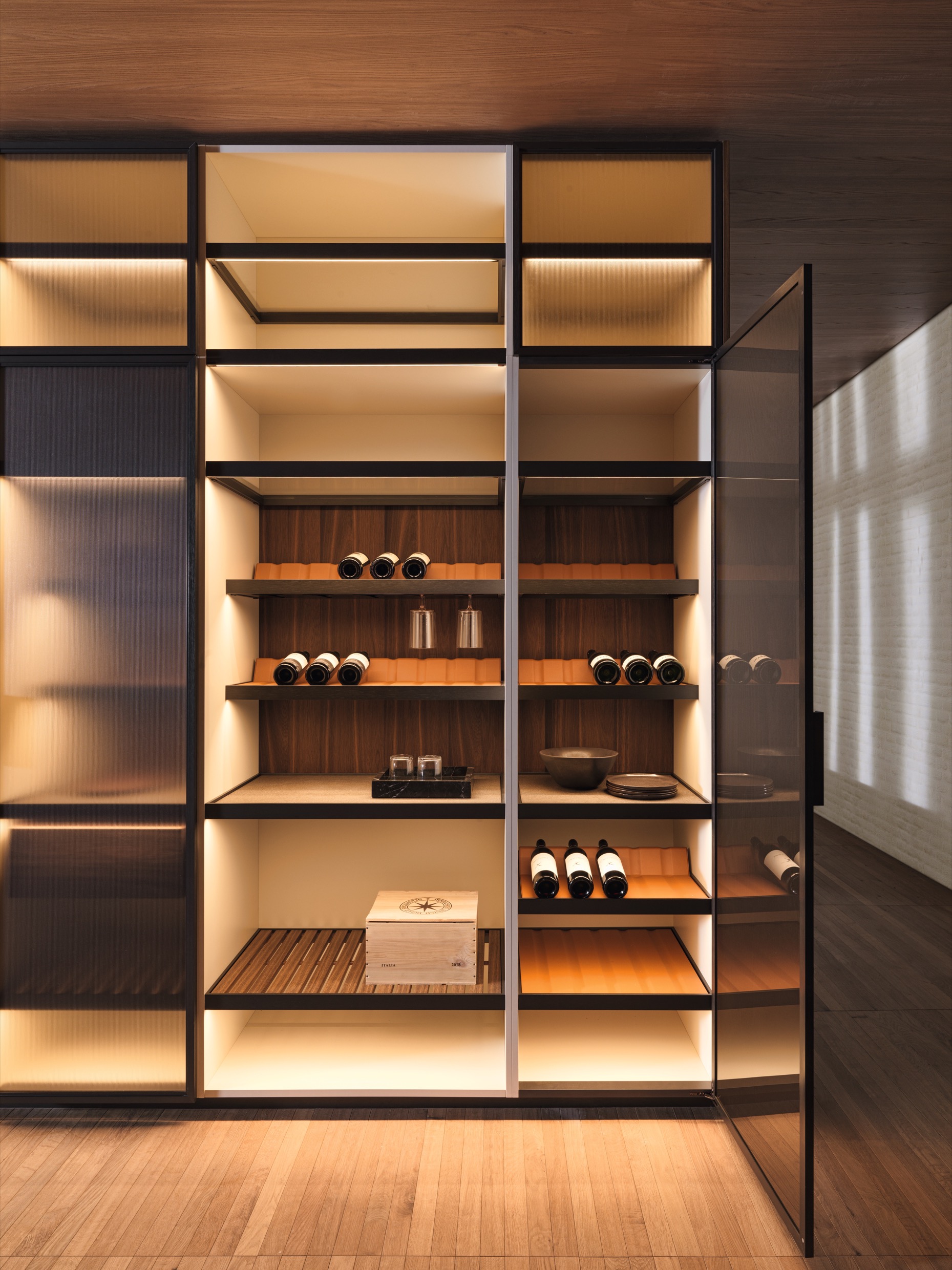The design of the Molteni&C 2023 Collection, with creative direction by Vincent Van Duysen, tells the story of the connection between interior and exterior, between intimacy and sharing, and between private and public space.
The design of the Molteni&C 2023 Collection, with creative direction by Vincent Van Duysen, tells the story of the connection between interior and exterior, between intimacy and sharing, and between private and public space.
The model is the domestic configurations of the ancient Roman Domus: the central element of the domus is the uncovered courtyard, from which the house receives light and water, collected in a basin. Around the court, the other rooms, private and public, are arranged. The inner portico, or peristyle, adorned with columns, bounds the garden, intended for otium in nature.
The Molteni&C 2023 Collection
The furnishings of the 2023 Collection thus strike a balance between the comfort of privacy and the sophisticated expressions of contemporary living, revolving around the uncovered courtyard, where the art of living takes shape. A home immersed in light and nature, lush, where indoor crosses over into outdoor.
A collection that dialogues with international protagonists of architecture and design: from Herzog & de Meuron studio to Japanese designer Naoto Fukasawa and creative director Vincent Van Duysen.
“The beating heart once again becomes the home: conceived in a new, domestic, cozy, and reassuring light, it becomes a place to participate and share, at the edge of public and private. A dwelling of ‘noble simplicity and quiet grandeur,’ to quote the archaeologist Winckelmann,” says Vincent Van Duysen.
If in past years furniture proposals have paid homage to modernist atmospheres, in 2023 the focus is on the essence of living, in harmony with the surrounding landscape. Textural colors, emphasized by the use of natural light, more convivial spaces and others more intimate. Van Duysen, guided by his contemporary approach, transforms the home into a place to find refuge, tranquility, and comfort.
Mateo Molteni&C
Vincent Van Duysen transfigures the dining concept, giving it personality with a new table proposal, Mateo, available in two configurations and two heights.
Mateo, equipped with a central pedestal with a cylindrical and conical shape furrowed in two in the vertical at the base, is available in round or oval versions tapered at the edge, adapting perfectly to any type of environment. The conical base is made thanks to a curved plywood mold; the combination of the two molded halves draws an open central joint, giving the base a totally unexpected personality. The leg is available in coffee oak, sunrise oak, the full range of glossy lacquers, and burnished metal.
The internal structure gives solidity thanks to an invisible core of painted metal, which ensures rigidity in the coupling between the base and top.
The Mateo table is available in two versions: dining, with a round or oval top, and lounge, equipped with a round top.
Finishes range from coffee oak, which encompasses the facets and tones of coffee, to the warmer sunrise oak, to glossy lacquers throughout the Molteni&C range, to calacatta marble, emperador dark and marquina black. Two new colors enter the lacquer palette: Pine Green, which recalls the typical dark green color of pine trees during the winter period, and Almond White, a sophisticated milk white.
Mateo can include the addition of a central revolving tray, Lazy Susan, a typical element of oriental culture, which allows all diners to be served in a practical way, creating intimate convivial situations, to be chosen in calacatta marble, emperador dark and maruqina.
Porta Volta Molteni&C
The Porta Volta chair by Herzog & de Meuron marks a new chapter in the collaboration between the historic brand Molteni&C and the internationally renowned architecture firm, a longtime partner of the Molteni Group.
“Until now we have created furniture spontaneously, intuitively, and always in response to a personal need or a specific project in a specific place. That is why there is often a geographical reference in the name of our creations,” explains Jacques Herzog. “The Porta Volta chair is an exception: I wanted to design a chair with arms because none of the existing ones appealed to me. I wanted it to be comfortable, cozy, and with a wide seat. I wanted it to feel like sitting in a room rather than on an object. Choosing a wood of a certain thickness seemed like a good place to start because it lent itself to being bent and worked. It only took four planks to build the chair and define its dimensions.”
The Porta Volta chair highlights the relationship between the upholstered seat and the rigid backrest, the main design element. The backrest follows the perimeter of the seat to form a U, pushing forward to create the armrests, while a comb-like joint, formed by three interlocking U-shaped elements, connects it to the underlying frame and legs. The legs and backrest are tilted slightly outward to create a sense of stability and ensure extra comfort and support. The frame is made from high-quality solid wood: eucalyptus, black oak, Sunrise oak, Graphite oak and Canaletto walnut, for exceptional durability and strength.
The generous seat upholstery, specially designed to give maximum comfort, is available in a wide range of fabrics, leathers, and a special selection of mohair velvet. Four custom colors make up the exclusive fabric collection: a vibrant sunflower yellow, a cheerful daisy pink, an intense royal blue, and a silvery gray.
The chair is designed in two different sizes for greater flexibility and broader intended use. The first version is suitable for dining environments, while the second, dubbed the “low chair,” is designed for the living room or study, being slightly lower. The latter boasts the ideal height to be placed near a sofa or armchair, allowing for easy conversations between the two.
Upon request, the Porta Volta chair can also be made with an upholstered back: a special rectangular element is attached to the wooden band, which is also available in a range of fabrics and leathers. The chair can thus be customized to harmonize with a wide variety of interiors.
Tuscany Molteni&C
Renowned Japanese designer Naoto Fukasawa designs Tuscany, an interpretation of the archetypal chaise longue.
Fukasawa takes inspiration from the iconic vistas of the Italian landscape, interpreting it through his aesthetic lens and fusing stylistic cues from both cultures-Italian and Japanese. The form of the chaise longue draws on a long-standing tradition that finds its beginning date in the 1920s and 1930s when this type of furniture was born.
“The chaise longue, with its undulations reminiscent of the rolling hills of Tuscany, is designed to be able to relax while admiring a view in the distance. The cushions, which are soft and ergonomic, fit the body’s silhouette perfectly,” Fukasawa explains.
Tuscany embodies that idea of comfort and ease, thanks in part to its structure, expertly shaped to follow the body’s natural lines. Its line conveys a sense of lightness and fluidity, accompanied by an innovative design that is visually harmonious and deeply relaxing.
The shape of the chaise longue is obtained by curving and assembling several layers of wood, resulting in its characteristic shape. A slow process, layering piece by piece, creating a striking artifact. It is the result of a meticulous process achieved by Molteni&C’s R&D department, which studied its ideal balance and proportions together with the designer.
The legs supporting the frame are also made of solid wood and connected by a satin-finished brass H-frame, providing a sturdy and elegant base. The cushions with differentiated bearing capacities, connected by carefully concealed hinges, form an articulated whole that neatly embraces the structure.
These can be crafted in Molteni&C’s different types of fabrics and leathers, creating a pleasing harmony with the other elements of the Collection. The rounded headrest is designed to be adjusted independently and is balanced by a metal dowel supported by straps, allowing maximum comfort.
Tuscany is available in two different versions: the first combines a eucalyptus finish with metallic details in satin brass; the second combines the natural finish of sunrise oak with the sheen of stainless steel for a more contemporary effect.
Cinnamon Molteni&C
Naoto Fukasawa also signs for Molteni&C the Cinnamon armchair, a masterpiece that perfectly combines form, function, and comfort. A soft, enveloping structure that exudes an air of warmth and tranquility, inviting immersive and relaxing seating.
“The inspiration for Cinnamon comes from the feeling of being encircled in a soft embrace or as if you were floating on a body of water, with your arms gliding over the surface. A simple but comfortable form where the body is pleasantly welcomed,” Naoto Fukasawa recounted to define his inspiration.
Cinnamon has a seemingly simple but technically complex form: the structure features a rounded line that describes its silhouette. The U-shaped base follows the entire perimeter, and the bulbous seat with a removable cushion is designed for maximum comfort.
Aesthetically, the Cinnamon armchair is harmonious and unified, the seams are masterfully concealed, leaving free expression to its sophisticated appearance. Made with meticulous attention to detail, it is upholstered in two different stretch fabrics specially made for the project, perfect for adapting to the rounded shape.
The Zeus cloth fabric echoes the tradition of antique textiles reworked with a modern twist and is made from carded wool yarn, blended with an elastic fiber to make it suitable for following the shape of the Cinnamon armchair while still being soft to the touch.
The fabric offerings range from 21 different colors, each designed to add a unique touch of elegance. From more textural tones to shades of gray, from ivory shades to warmer nuances such as ochre.
Cinnamon becomes an iconic design piece with great personality, designed to be used with versatility in any room of the house such as the living room, bedroom, study or any other space where comfort and style are a must.
Its wrap-around, curvy shape offers an exceptionally comfortable and inviting feel thanks to its unmistakable anthropomorphic references that give it a distinctly playful personality, making it the perfect place to indulge in reading a good book or simply relax after a long day.
Augusto Molteni&C
The Augusto sofa, designed by Belgian designer Vincent Van Duysen, is an exploration of contrasts: classic lines of the past intersect with current taste; technical innovation meets Molteni&C’s craftsmanship.
The key to Augusto’s timeless aesthetics lies in the balance of its soft upholstered seating and the refinement of its modern metal frame, which discreetly embellishes it, creating a unique and harmonious design, perfect for different types of environments. Sanctioning Augusto’s personality is elegant piping that defines the shapes.
“For this sofa, we thought of an element that would accentuate the architectural and graphic presence, inserting precious details that would give it an extra touch of personality,” says Vincent Van Duysen.
In conceiving the Augusto sofa, Van Duysen started with the idea of total comfort and softness, meticulously examining the ergonomics of the body with respect to the seats and backrest. The sophisticated metal frame that makes up the base runs flush along the perimeter of the sofa, emphasizing its volume and giving it a light touch.
The frame is composed of solid wood, while the padding is made of high-bearing, variable-density polyurethane foam, ensuring maximum comfort. The seat cushions are made of recycled and recyclable PET polyester fiber. The painted aluminum base rests on the ground thanks to aluminum feet with non-slip toe caps.
Augusto is available in the full range of Molteni&C’s leather and fabric collection and can be embellished with piping, which is also available in all leather varieties and four fabric options-anthracite, dark brown, olive green, and paper white-that allow for customization.
“The profile of the piping has been imagined as a subtle tone sur-tone play or with a contrasting effect,giving it a distinctive, eye-catching look and adding a decidedly interesting graphic element, which draws the outline of the object while accompanying the eye to discover its sinuous lines,” Van Duysen explains.
Paula Molteni&C
Vincent Van Duysen also designs the Paula armchair, which rightfully ranks among contemporary seating icons, giving a sense of movement and lightness within the space.
“For this armchair, we were inspired by modernist furniture such as Mies Van Der Rohe’s Barcelona armchair, a contribution to the Art of Living that has its origins in the latest work we have developed with Molteni&C. We paid attention to details and proportions: the transposition of a decisive silhouette interpreted by the lightness of the metal frame and an ingenious system of leather straps that defines the seat and back and contains the cushions,” says Van Duysen.
The key to Paula’s timeless elegance is evident in its carefully studied proportions: with its cantilevered frame and suspended cushions, the armchair is designed to create a synthesis between the soft seat and the sturdy, solid base.
The seat features an outline where the seat and back are attached to the metal frame by a system of leather straps, which create a warm contrast to the burnished or sand metal frame. The leather straps are available in four shades: natural, tobacco, hazelnut, and mud green.
The matching ottoman is a natural continuation of the armchair. Its base features the same burnished metal or sand finish as Paula, and the cushion is attached with the same system of leather straps.
Aster Molteni&C
The Aster coffee table, designed by Van Duysen, is the ultimate expression of compositional rationality and craftsmanship. A unique object made entirely by hand, a contemporary work of art that combines aesthetics and functionality.
Each table has a slightly different connotation, testifying to its handcrafted nature. Aster’s base features a brass casting made with an earthen mold that gives it the sophisticated hammered effect. The ring is assembled to the legs by welding. The vibrofinishing technique complements its aesthetics.
By means of stones, the structure is gently smoothed, restoring a wavy effect. The top consists of an annealed glass with a thickness of 1.9 cm and is distinguished, in the lower part, by a slight ripple that gives personality. Here, too, the manufacturing technique is meticulous: the sheet is placed in a mold with an embossed bottom and fused at a temperature of 180 degrees, giving the glass its typical finish.
Available in two sizes, Aster can be customized in polished brass or black patinated brass finishes, while the top can be declined in two colors: smoked or green.
Remi Molteni&C
The Remi console table is a meditation on materials, form, and craftsmanship.
“For the console we thought of a decorative piece of furniture, an object that could create a connection between the elements of the living area, using the language of wood to create additional details. Remi can in fact be used as a stand-alone element or as a sofa back,” comments Vincent Van Duysen.
The console table was also designed to be placed behind the Augusto sofa, recalling its proportions and acting as a solid counterweight to the soft, voluminous silhouette of the backrest.
The wooden structure with solid base joints is available in the precious coffee oak essence, while the top fully embodies Molteni&C’s craftsmanship and attention to detail, thanks to the sense of the vein running forming a unified design.
Regent Molteni&C
The Regent coffee tables designed by Vincent Van Duysen are an indoor revival of the version launched for the Molteni&C Outdoor Collection.
In conceiving the coffee tables, Van Duysen demonstrates the fluidity and essentiality of his designs, proving that aesthetically these forms can live comfortably in any context and can create a natural continuity between indoors and outdoors.
“After the success of our first Outdoor Collection, we wanted to accentuate this indoor-outdoor relationship by integrating the same table structure but implementing the top material,” explains Van Duysen.
The base of the Regent coffee tables consists of a burnished metal ring enhanced by slender legs that create the structure. A mirrored structure supports the coffee table top made in different finishes: enameled lava stone in anthracite, olive green, desert yellow, and matte-finish lava stone. To enrich the indoor version, polished polyester finish lava stone, black marquina marble and calacatta marble in matte or polished polyester finish.
The Regent table is available in different proportions and shapes. From low oval-shaped versions, ideal for use as a coffee table, to round varieties, which are easily adapted as a support structure next to a sofa.
Grid Up Wall Unit Molteni&C
The Password Evolution system is enriched with Grid Up, a wall unit designed by Vincent Van Duysen that can be either open or closed with doors and side shoulders in extra-clear and Stopsol transparent glass. Pewter or iris profiles outline the design of the module, accessorized inside with a new system of directional spotlights.
Finishes include the entire range of matte lacquers, eucalyptus and sunrise oak, as well as graphite oak. This element, which can be hung directly on the wall, creates a striking dynamic effect.
Old Ford Molteni&C
The Old Ford table by Italian designer Rodolfo Dordoni perfectly embodies Molteni&C’s commitment to combining aesthetics, functionality, and technical innovation.
The table consists of a rounded, sinuous top with a section connected at the ends that meets a solid, polished base characterized by the connection of the legs to an H-shaped frame.
The finely crafted top is available in limba, coffee oak, emperador marble, calacatta, and sahara noir finishes in matte and glossy polyester versions, giving it a warm and inviting appearance.
The lower body of the table resembles a shell, characterized by soft lines, and is available in anthracite, with a sleek and modern look. The contrasting legs are available in three glossy lacquer finishes: pine green, burgundy red, and black nickel.
The table’s supporting structure is made using the hydroforming technique, a sophisticated process commonly used in the industrial mobility sector, which uses water pressure to shape the material. This process allows the table to be lightweight yet structurally rigid, ensuring durability.
Old Ford provides ample space to sit and dine or to become, thanks to its distinctive shape, a sculptural piece in the center of a foyer. The oval shape also allows the table to adapt to a variety of interior layouts, making it a versatile option for any home.
Archway Molteni&C
Rodolfo Dordoni also designs the Archway sideboard, elegant and modern, marked by a structure that is striking for a new compositional concept characterized by an elegant silhouette with a modern flavor.
The door is embellished with a metal profile slightly overhanging the top to determine, with a rigorous stroke, the handle. In the center is an open compartment accompanied by a drawer, providing a hollow central volume that gives the piece a sense of movement.
The clean lines of the sideboard and the interplay of thicknesses between the structure and the doors give it a minimal and contemporary character, making it the perfect complement to be placed against a wall or in the center of a room as a dividing element.
Archway is customizable in the glossy lacquer shades available in the catalog, including pine green and almond white, allowing endless characterization possibilities to match it with ease to any interior. The top, in contrast to the frame, is available in wood or marble. Essences include limba with its golden tones or coffee oak, with its intense mottling.
The marble proposal ranges between calacatta and sahara noir in matte or polished polyester versions, offering a wide range of options for customizing the aesthetics.
Door grooves are the epitome of attention to detail: cut at a 45-degree angle, they give a unique and precious look. Specially designed hinges are built into the shoulder of the sideboard itself. The interior shelves can be in wood or smoked glass.
505 Up System Molteni&C
505 UP System, which has always been a classic Molteni&C offering in the field of modular systems for the living area, is still evolving to meet new living styles typical of contemporary living.
Nicola Gallizia proposes a new door enriched by a full-height handle that becomes a profile that embellishes the layout. Finishes include coffee oak essence and the exclusive 3D effect that can be customized in all the colors of the Molteni&C range.
505 Up System moves further away from the classic bookcase function, expanding its solutions and configuring itself as a modern furnishing element for a contemporary living concept.
Pass-Word Evolution Molteni&C
Dante Bonuccelli’s Pass-Word living system constitutes an essential part of Molteni&C’s catalog.
Based on a modular composition and juxtaposition of materials, the system combines solid and transparent elements in an infinite number of configurations, allowing complete freedom of expression.
New in 2023 is the completion of the horizontal glass wall unit, which is updated with an innovative patented upward flap opening. The door movement is operated by a damped mechanism hidden inside the profiles that exclude the use of visible side arms, making the wall unit unique.
Completely transparent on the sides as well, it is designed to be mounted above a console element, providing a delicate sense of balance. LED electrification gently illuminates the contents of the shelves. A touch of added elegance, to connote any modern living space.
Atelier Column Molteni&C
Atelier Columns designed by Vincent Van Duysen is an element that can be inserted transversally in all collections, designed to embellish the kitchen thanks to functional and scenic equipped niches that can be totally customized.
The version presented by the Belgian designer can be declined both open and closed with framed doors, VVD, Flair or Stripe. The columns follow the philosophy of customization, bringing to the kitchen world the concept of bespoke realization typical of Molteni&C.
The finishes of the backs, shelves, and drawers can be composed to create ever-changing aesthetic solutions. Shelves can be made in different finishes such as glass, ceramic, slatted, eco skin, or wood.
To the accessories already available, Vincent Van Duysen adds a new eco-skin bottle holder complete with a glass holder, designed to offer a practical and elegant solution for displaying drinks.
The drawer block is available in two types: with the exclusive Vionaro movement, with a patented anodized aluminum sideboard, or with all four sides in essence. The alternation of materials and the play of solids and voids create a dynamic yet sophisticated proposal.
